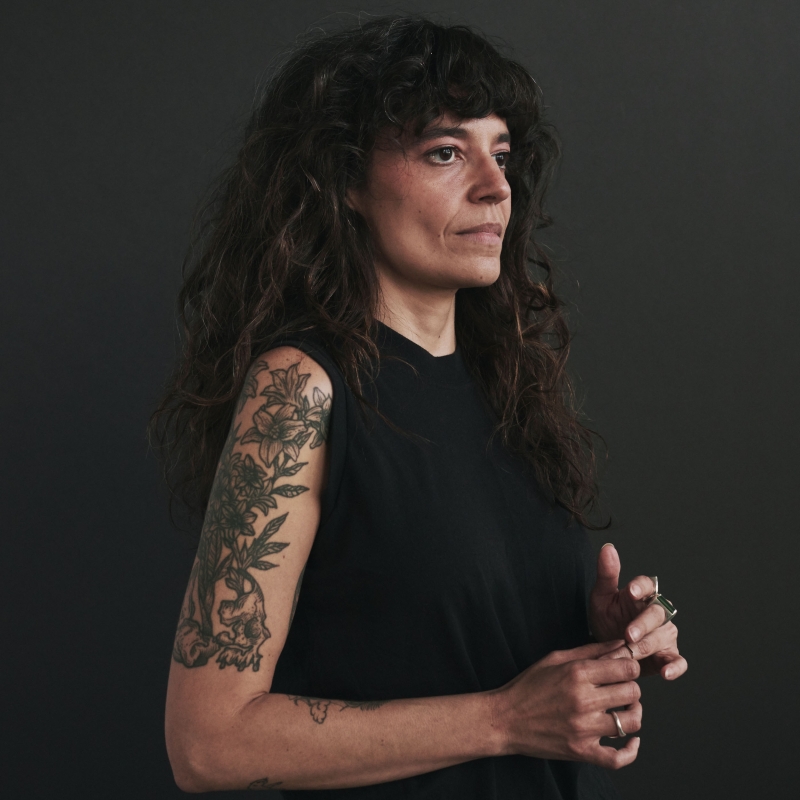
Rebecca Adorno Davila is an interdisciplinary artist and filmmaker from Puerto Rico. Her work comes from a research-based approach rooted in her background in Engineering and Fine Arts. By recontextualizing scientific data, Adorno creates physical representations of intangible phenomena that hint at a type of social science fiction.
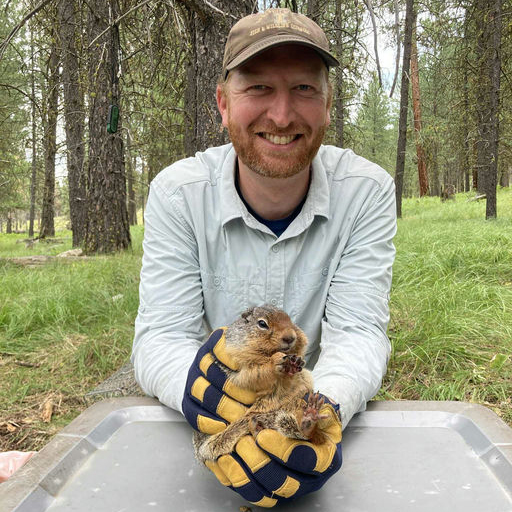
Austin’s interests within the fields of ecology and evolutionary biology are broad, ranging from individual physiology to community ecology. His dissertation research uses hibernating mammals as models to elucidate the eco-evolutionary drivers of individual life-history strategies. He previously completed a M.S. under Dr. Courtney Conway at the University of Idaho studying behavior and demography of the federally threatened northern Idaho ground squirrel.
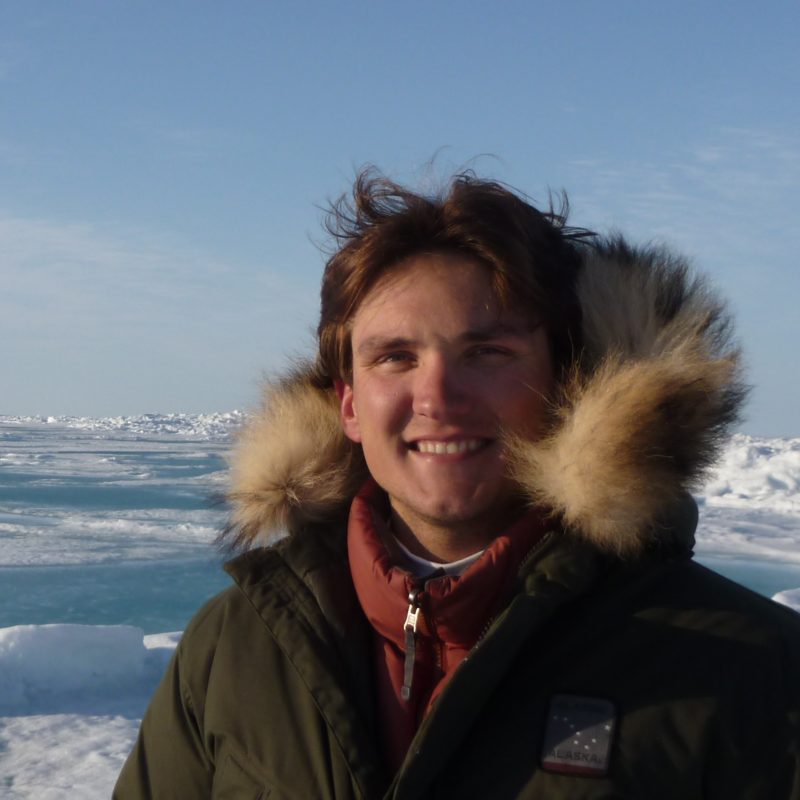
Christian’s research focuses on earth system science applied to land-atmosphere carbon dynamics under the effects of climate change. This includes changes in surface hydrology, vegetation and geomorphology under climate change, interactions with biogeochemical processes and how these relationships influence higher-level environmental patterns and processes.
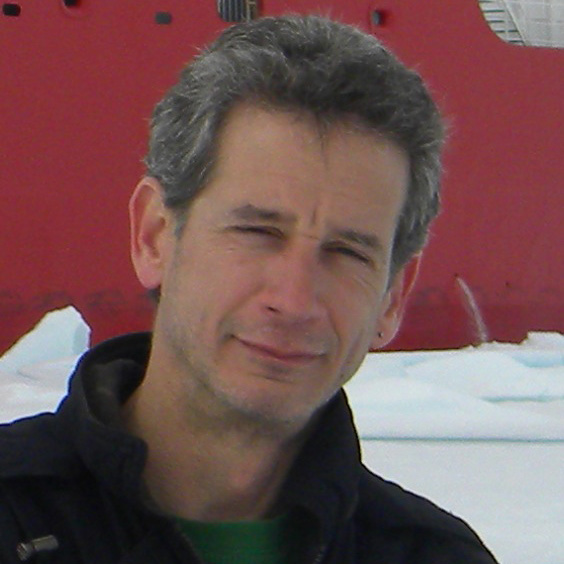
Kevin is a biological oceanographer who studies the microbial ecology of polar ecosystems to better understand their role in marine food webs, nutrient cycling, and productivity. His research focuses on photosynthetic organisms living in the sea ice and the ocean and how they are able to thrive in such extreme polar conditions. He is particularly interested in how climate-induced changes in polar environments are changing biological productivity and how this might impact marine ecosystems.
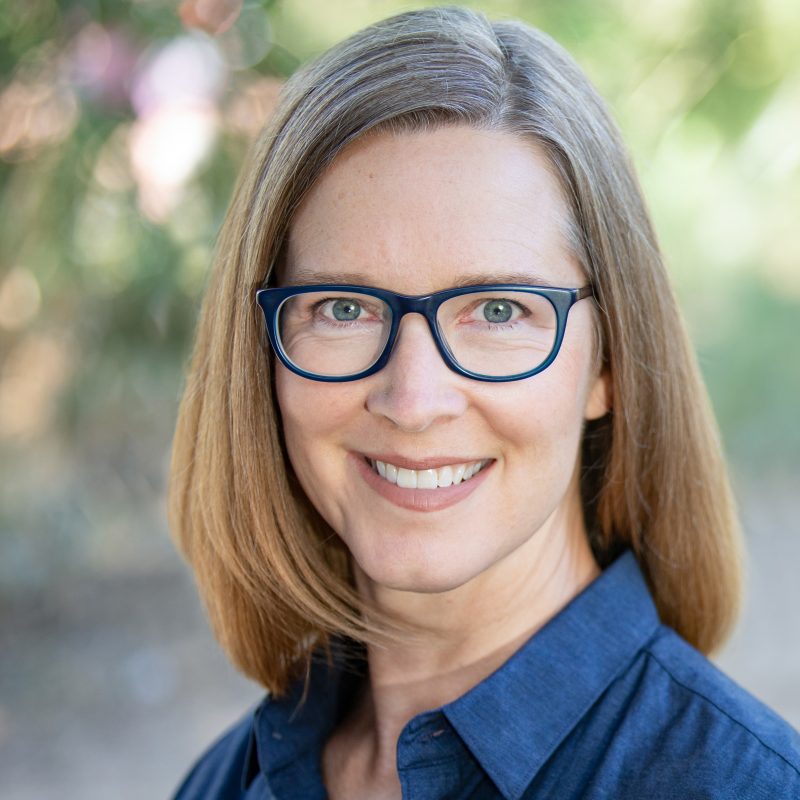
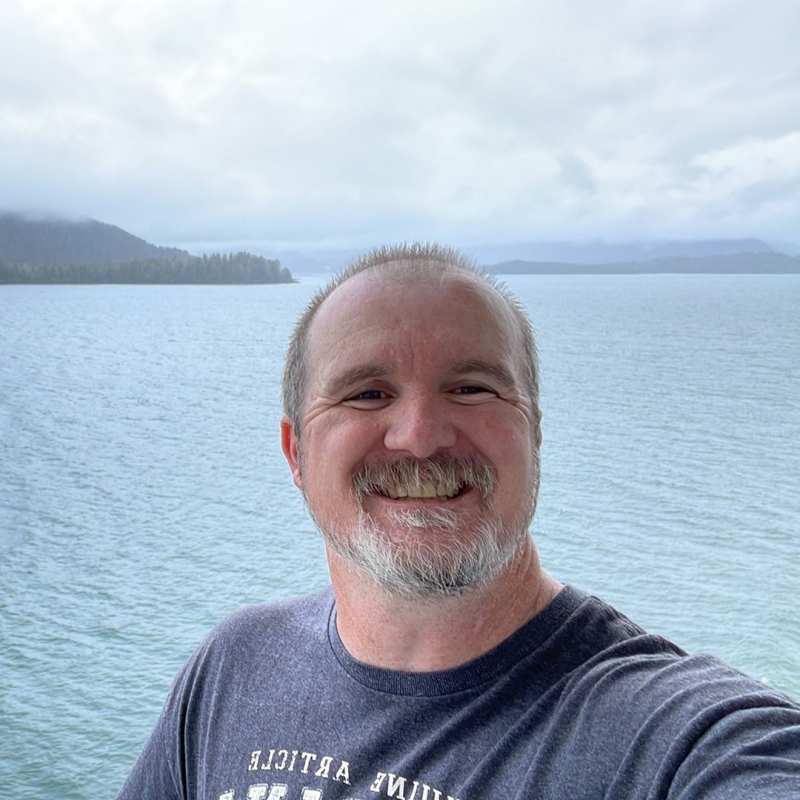
Bill is a middle school math educator who creates an atmosphere where students learn through doing. He believes that it is not enough for students to learn the “how to”s of any particular subject, but rather more important that they learn the why’s and develop a comfort with solving whatever problems may arise. He strives to connect content and pedagogy to real world application to truly tap into the greatest learning potential of our youth.
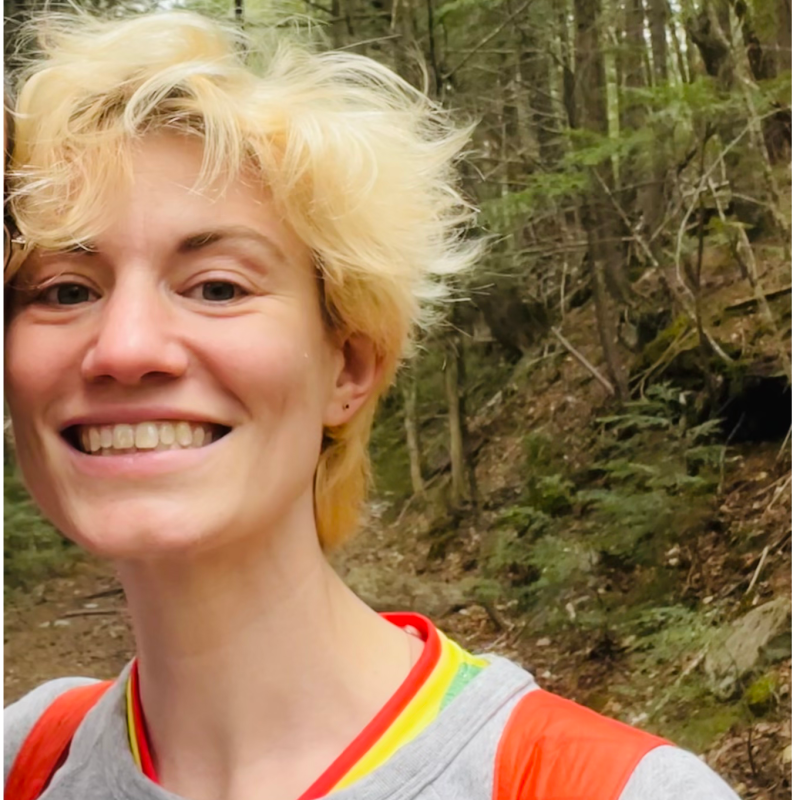
Madeline Avram Blount works as a technologist, researcher, and an artist. She explores creative interventions through work in code, digital media, performance, and social practice. Recent projects include co-founding a housing justice app, coding music from ant colony simulations in Panama, developing curricula for teaching ethics in scalable computation, and studying intersections between artistic improvisation and complexity science. An avid birder originally from Oregon, Madeline now brings her binoculars with her on the subway in Brooklyn, New York.
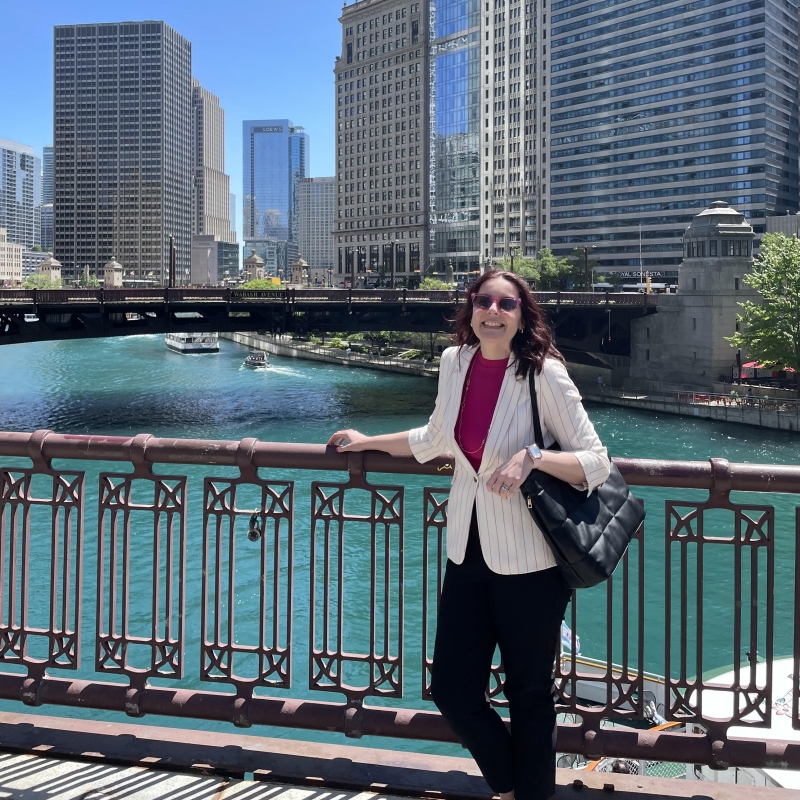
With degrees in geology and paleontology and more than fourteen years of teaching experience at the community college level, Chloe embraces her love and curiosity of the natural world. She is committed to scientific literacy and improving access to the earth sciences and is an advocate and author of Open Educational Resources (OERs). In her spare time, she enjoys reading, baking, and exploring museums and parklands.
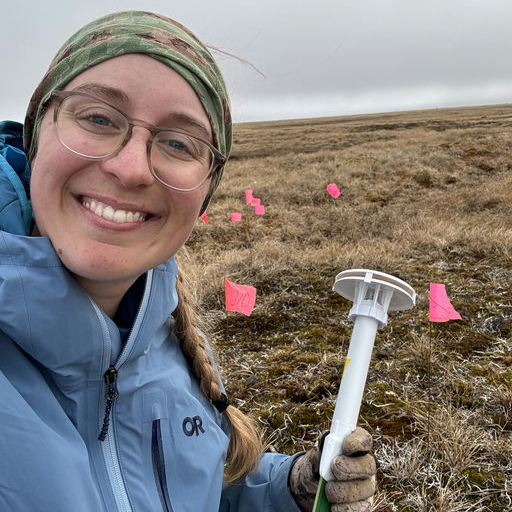
Katie’s research focuses on how climate change is altering the surface of the Arctic and, in turn, how those changing landscapes impact carbon cycling. She uses remote sensing to detect hot-spots of permafrost thaw, then visits those sites to collect field data on soils, plants, thaw properties, and carbon cycling. These data help identify risks of permafrost thaw across the Arctic Coastal Plain of Alaska, and aid in forecasting how the terrestrial Arctic will change as it continues warming.
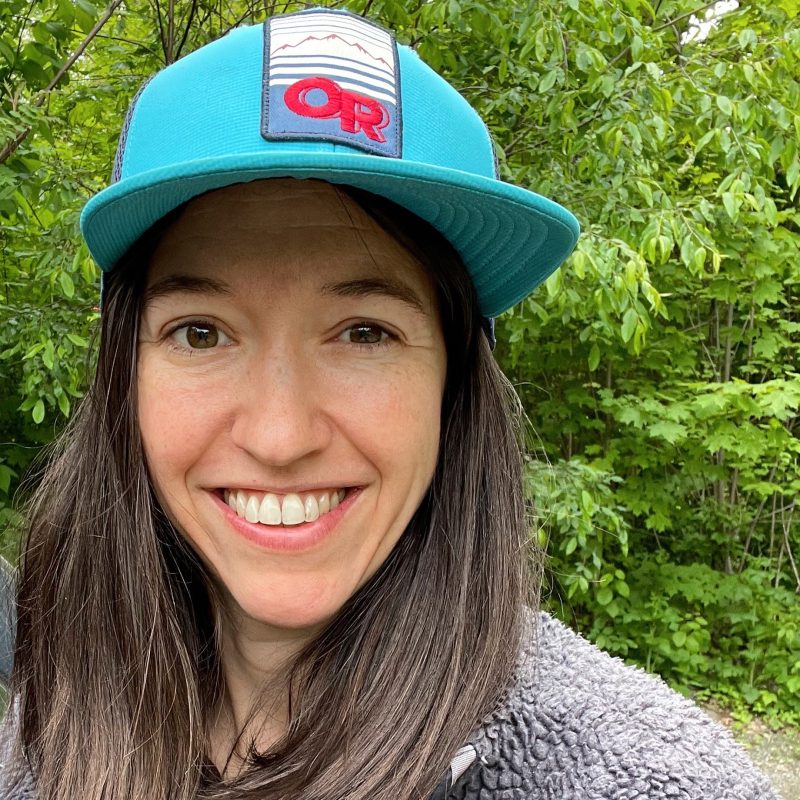
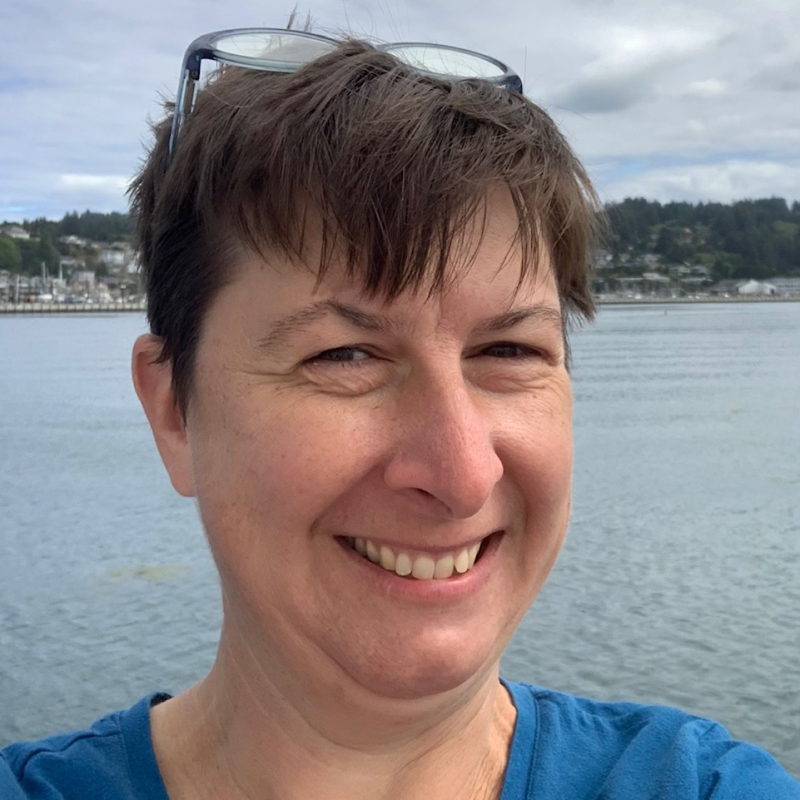
Beth is a paleoceanographer interested in the geologic history of sea ice and how it changes when the Earth warms. She uses single-celled algae–diatoms–to reconstruct sea ice in the subarctic North Pacific Ocean, specifically the Bering Sea. In summer of 2023, Beth will participate in a research cruise that aims to collect sediment cores from above the Bering Land Bridge in order to determine what the ecosystem of the Bering Land Bridge was like during the Last Ice Age and how sea ice changed offshore as climate warmed during the deglaciation.
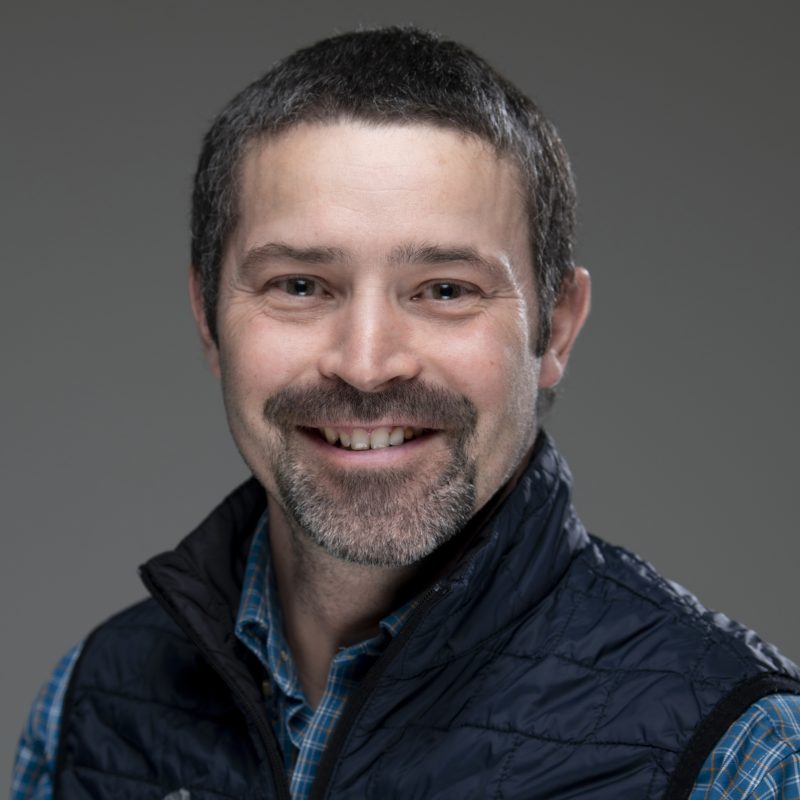
Seth is an Associate Professor focused on understanding the impacts of climate change on glaciers, ice sheets, permafrost, and ecosystems across Earth. He is also Co-Director for the Juneau Icefield Research Program, a thriving education and research non-profit that is focused on training the next generation of Polar scientists. Seth is particularly passionate about inspiring others to explore the incredible wild places and science of our planet and beyond.
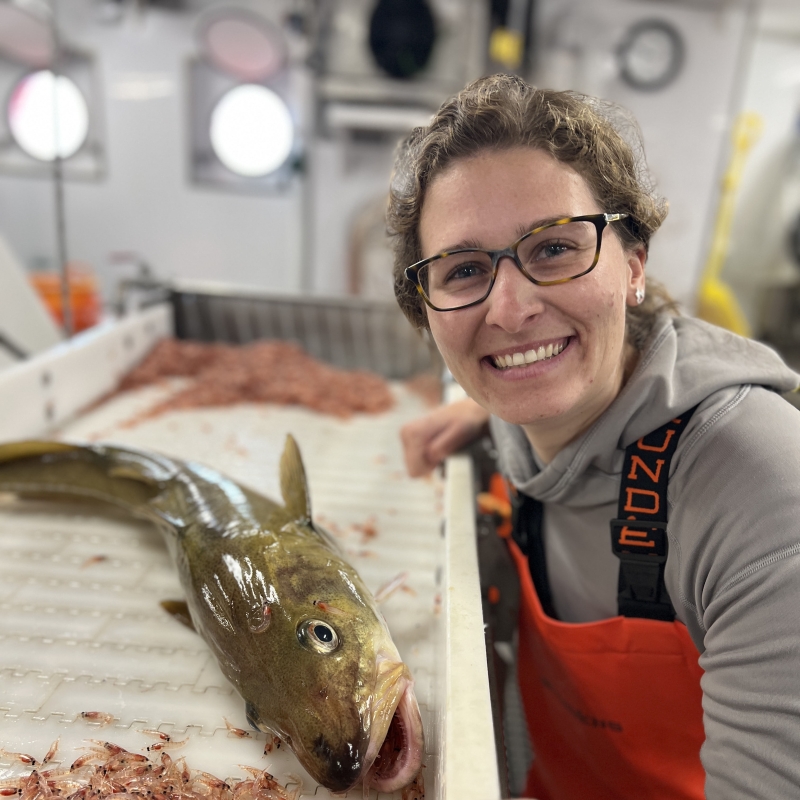
Haley is a PhD student who studies zooplankton community ecology in Arctic fjord systems. Her project is focused on exploring relationships between these communities and water masses in glacial fjords throughout Greenland. This is done through community analysis and defining trophic interactions using stable isotopes. Outside of science, she is an avid runner, swimmer, mountaineer, and global language learner.

Emelia Chamberlain is a biological oceanographer who studies the microscopic life that thrives at the icy extremes of our planet. Using a combination of field observations and modeling approaches, her current research focuses on quantifying the impact of microbial diversity on climate-relevant biogeochemical cycling and ecosystem function in the rapidly changing Arctic Ocean.
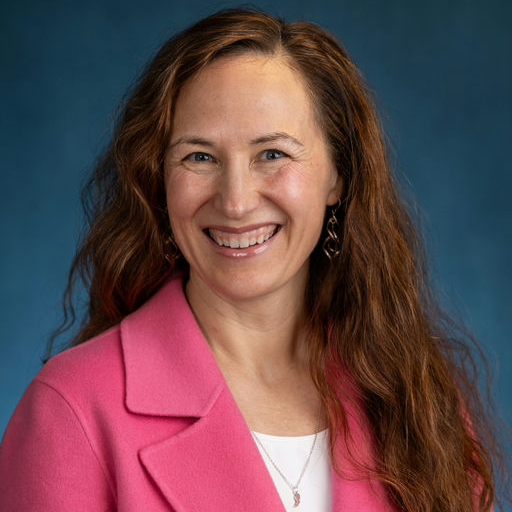
Rose M. Cory is a Professor of Earth and Environmental Science at the University of Michigan. She studies biogeochemistry along the land-water continuum in arctic and temperate biomes. Her research has focused on photochemistry and carbon cycling to understand processes controlling greenhouse gas emissions from soils, streams and lakes.
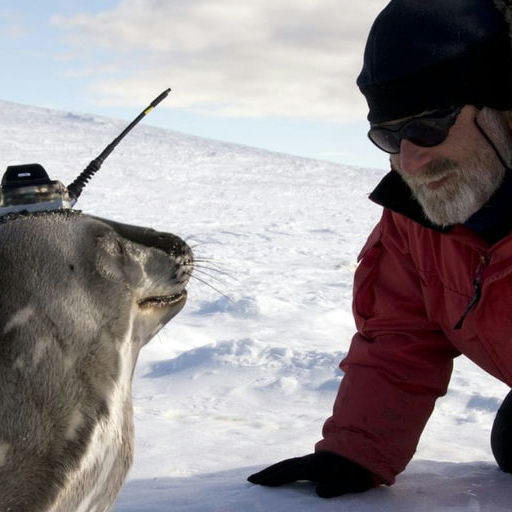
Dan has been studying marine predators for over 50 years and is interested in how animal work, how they manage to live where they live and why they do what they do. Dan’s research has included adaptations of animals to life in the marine environment, especially the movements, foraging ecology and energetics of pinnipeds and seabirds. Over the years Dan has worked with the US, British, New Zealand, French, and Australian national Antarctic programs.
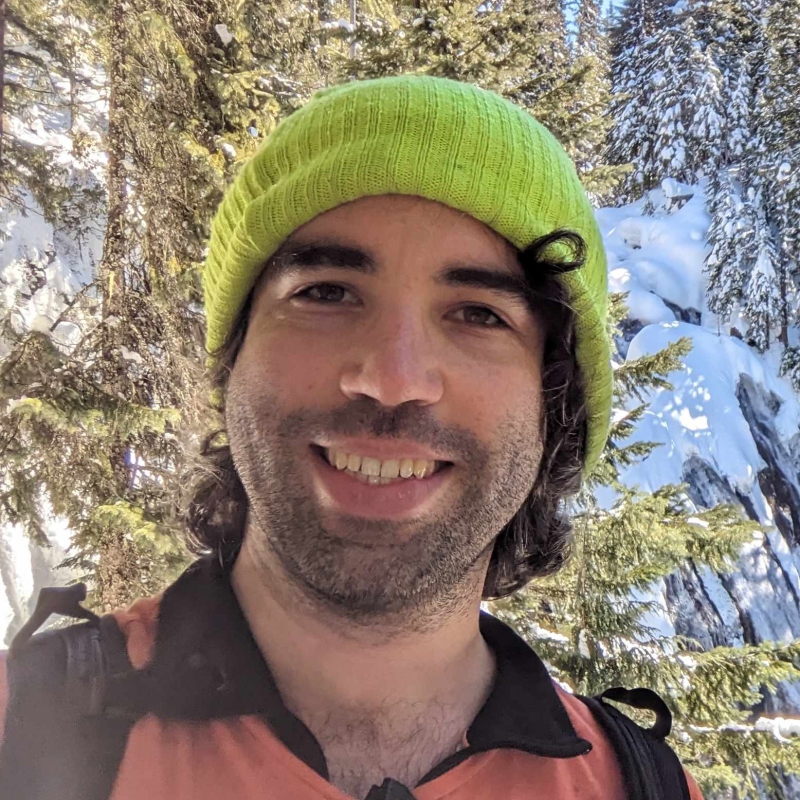
Jesse is a physical oceanographer and polar researcher. He is broadly interested in turbulent ocean currents and their role in Earth’s climate. Recently, he has focused on currents occurring adjacent to marine terminating glaciers and their impact on ice melt. Jesse uses a range of instruments, including autonomous robots and drifters, deployed from ships to collect observations in ice-choked environments.
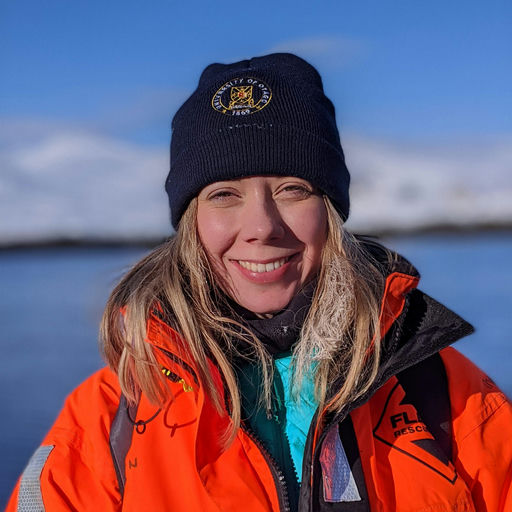
Joanna Davies is a paleoceanographer whose research focuses on understanding how sea ice in the Arctic responded to climate change in the past. Using lipids produced by algae living in sea ice that are deposited onto the ocean floor when the ice melts, we can reconstruct sea ice changes back thousands or even millions of years ago. Joanna has taken part in numerous research cruises to the Arctic, to collect marine sediment cores used for this paleoclimate reconstructions. Joanna’s current project focuses on understanding the role that sea ice played in freshening the oceans in the past, which can have broad impacts on our global climate.
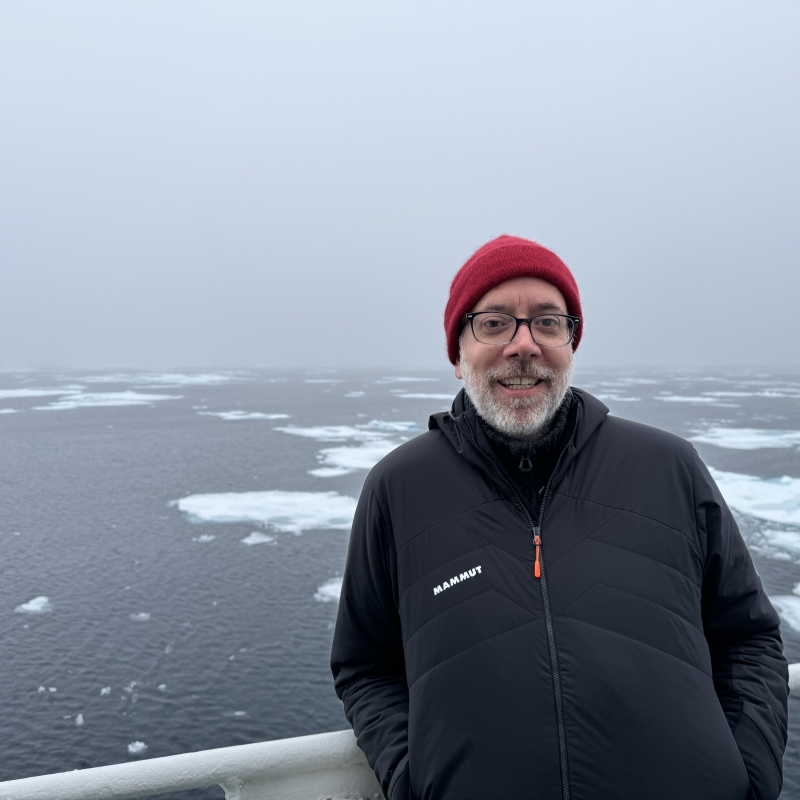
Gabriel Dawe is a multidisciplinary artist exploring the intersections of color, light, and space through large-scale site-specific installations. Best known for his Plexus series, he uses vibrant threads to create immersive environments that instill a sense of wonder in the viewers. His work draws inspiration from architecture, textiles, and natural phenomena, reflecting on themes of identity, environment, and impermanence. Through his practice, Dawe invites viewers to engage with ephemeral beauty while contemplating broader questions of human connection and environmental change.
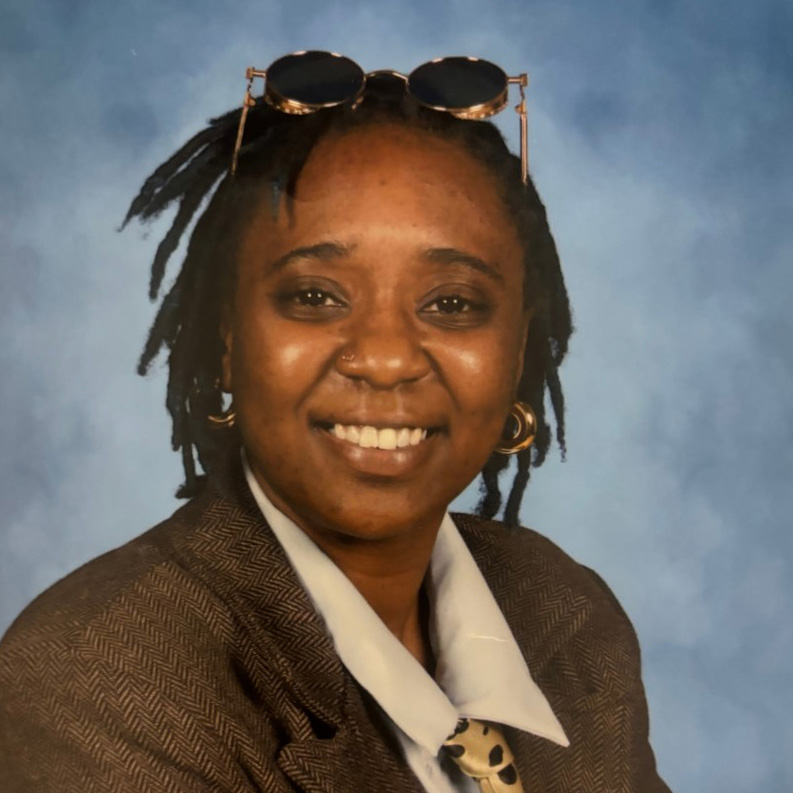
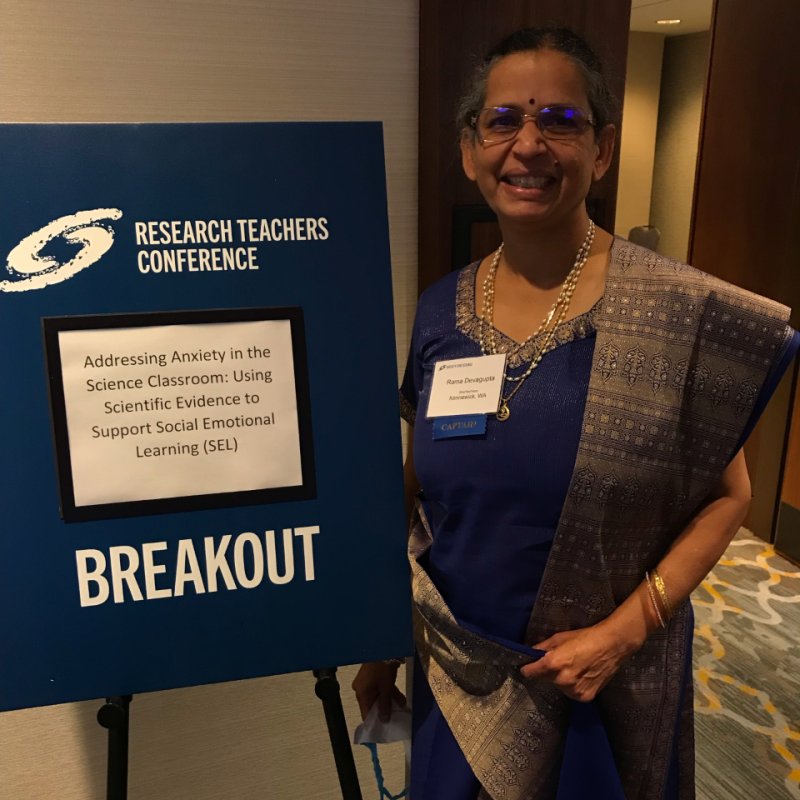
Dr. Rama Devagupta is a National Board Certified Biology and Chemistry teacher. She worked at the Pacific Northwest National Laboratories in Richland, WA as a Murdock Partners in Science Fellow during summer 2018 and 2019. Rama is honored and humbled to be selected as a 2023 Washington State PAEMST Finalist, 2023 Funds for Teacher Fellow, and 2022 NEAF Global Learning Fellow. Rama is also an artist and freelance writer, a certified Heartfulness Meditation Trainer, and a member of WEA/NBCT Leadership Cadre who advocates for quality education in our public schools.
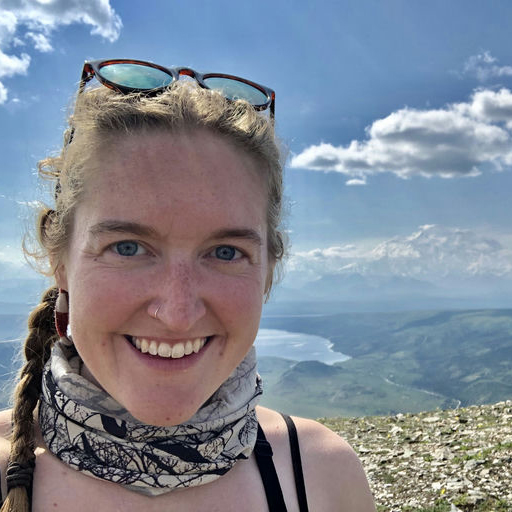
Bree researches human-animal relationships in North America as a researcher at the University of Wyoming. Her primary focus is on the traditional foodways of Alaska Natives in the Interior, particularly focusing on the history of fishing. Bree studies fishing through a combination of work with descendant communities, fatty acid residue analysis, and studying artifacts excavated from sites across the Tanana Valley, where she grew up. In her free time, Bree loves running, making delicious food for her family and friends, and hiking the trails of the Mountain West.
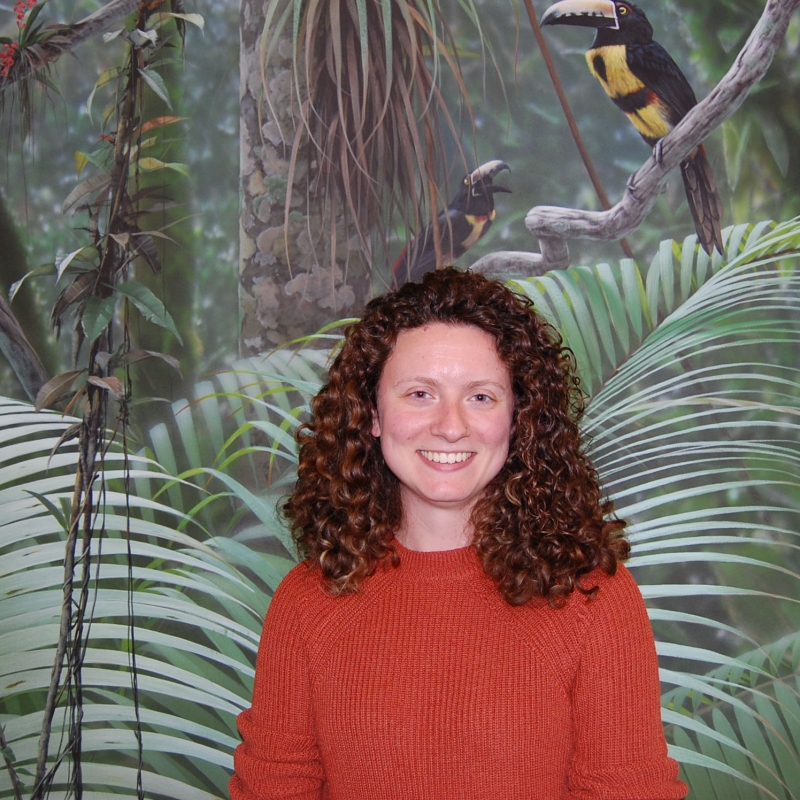
As the Student and Teacher Programs Coordinator, Jacklyn helps develop and facilitate educational programs for all ages with a focus on the relationship between humans, animals, and the environment. Working in a large urban city, access to natural spaces can be challenging so she seeks to foster connections between students and wildlife in creative ways. In her free time, she loves to read, cook, and exploring new places locally and globally.
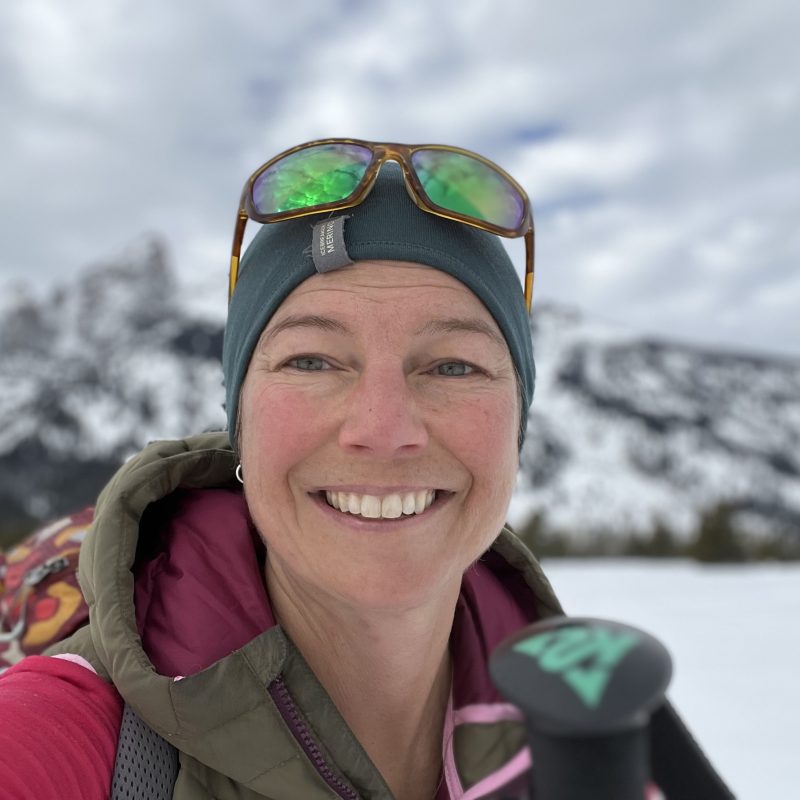
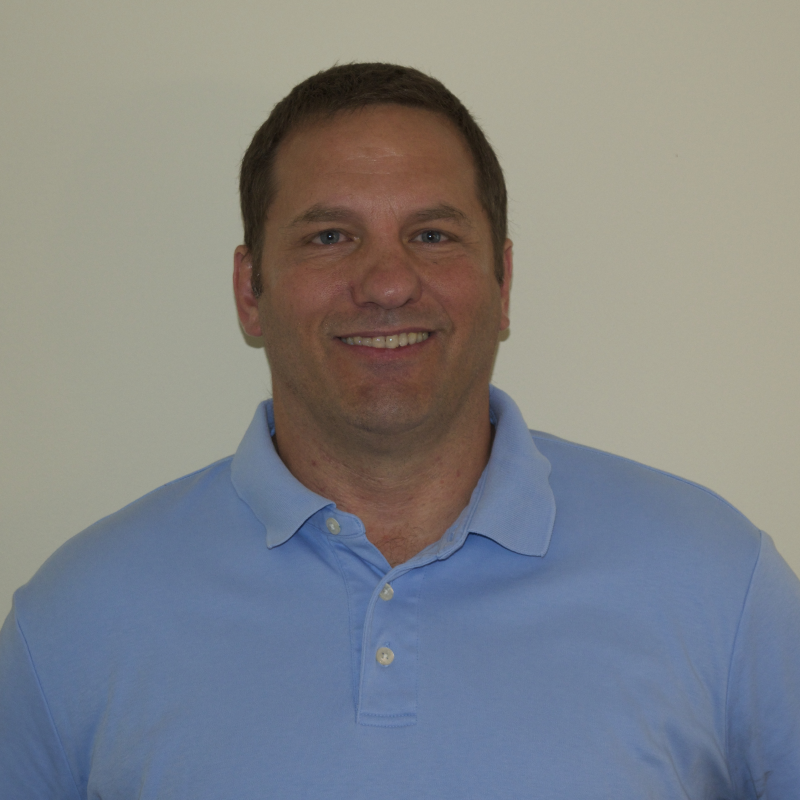
Dave has worked to incorporate both STEM/STEAM and global competency into his project-based engineering and research classes. He serves as the Green School Coordinator, the sponsor of the Get Into Tech and Astronomy clubs, and is a teacher-coach for the Engineering For Us All (E4USA) program. Dave resides in Maryland with his wife, daughter, and two black labs.
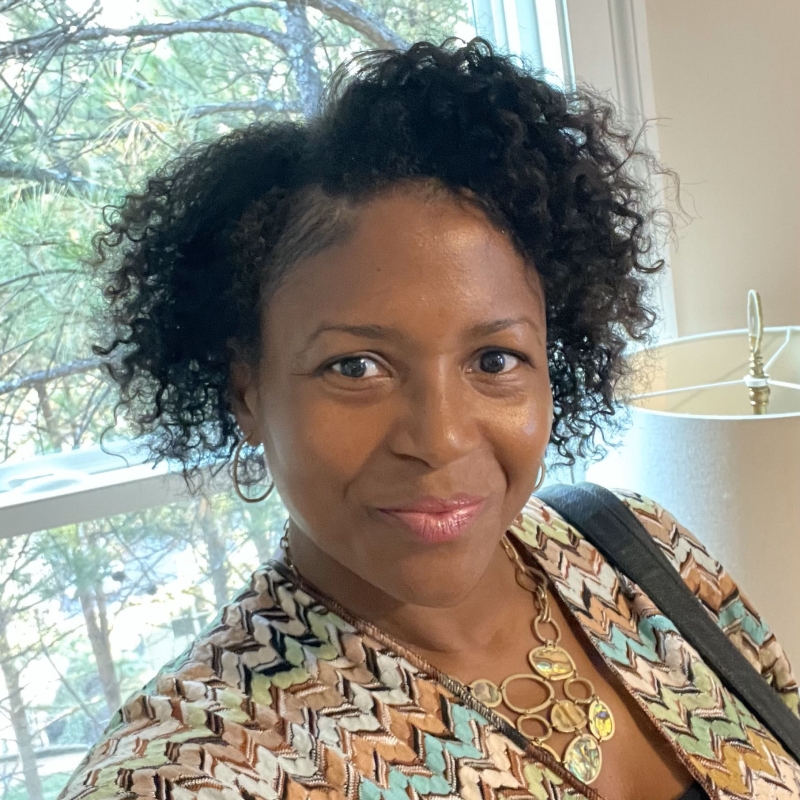
Tiffini is an Environmental Science professor at Kennesaw State University. As a lifelong learner, her journey has evolved from chemistry to sustainability education. As a STEM advocate with efforts to broaden participation, increase retention, and reduce barriers to contribution in the sciences, Tiffini is committed to STEM education with a focus on sustainability to empower students, particularly from historically underrepresented groups, to address issues related to climate change and remain engaged in the field.
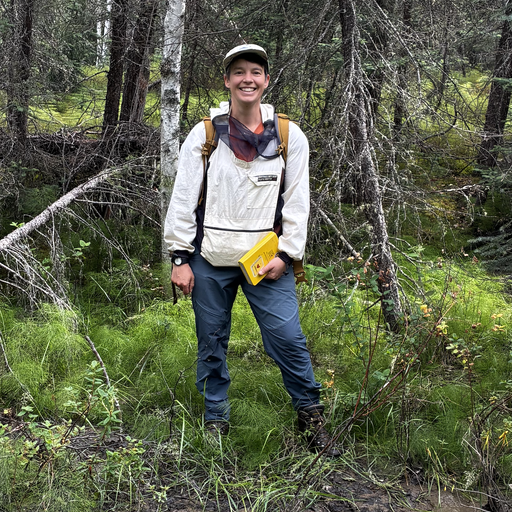
Louise is a permafrost scientist and periglacial geomorphologist who studies how Arctic landscapes respond to past and present climate change. Her research explores the processes driving permafrost degradation and the associated geomorphological and hydrological changes that take place as a result. Louise uses a combination of in-situ field observations, remote sensing, and geologic dating methods to improve our understanding of Arctic landscape change.
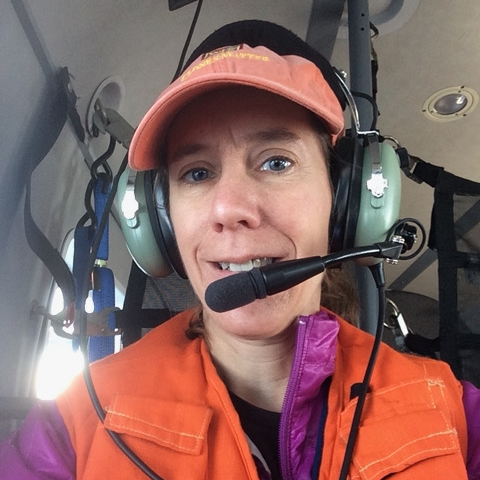
Sarah is a Professor of geology and Director of GeoFORCE Alaska, a field-based, summer geoscience program for rural Alaska high school students. She teaches undergraduate and graduate courses, including Historical Geology, Paleobiology, and Palynology. Her research involves identification of pollen and spores preserved in sediment cores in order to reconstruct past vegetation and climate. This summer, she’ll be collecting cores from the Bering Sea Shelf in search of sediment deposited in lakes and ponds on the Bering Land Bridge during the last ice age.
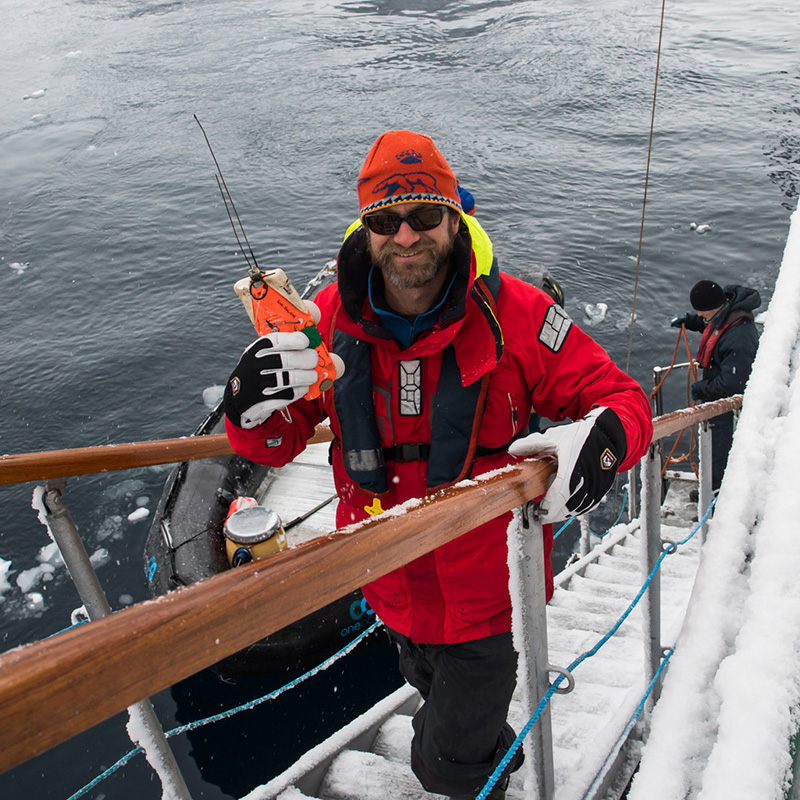
Ari Friedlaender focuses much of his research on the foraging behavior of marine mammals and their interactions with prey. He works on a wide range of marine mammal species including baleen and toothed whales and dolphins across a range of geographic regions. In Antarctica, he is involved in the Long-Term Ecological Research program at Palmer Station, where he studies the ecological roles of cetaceans in a rapidly changing environment. As a principal investigator in the Southern Ocean Research Partnership, he leads non-lethal research on cetaceans in the Southern Ocean, contributing to a deeper understanding of marine ecosystems in this critical region.
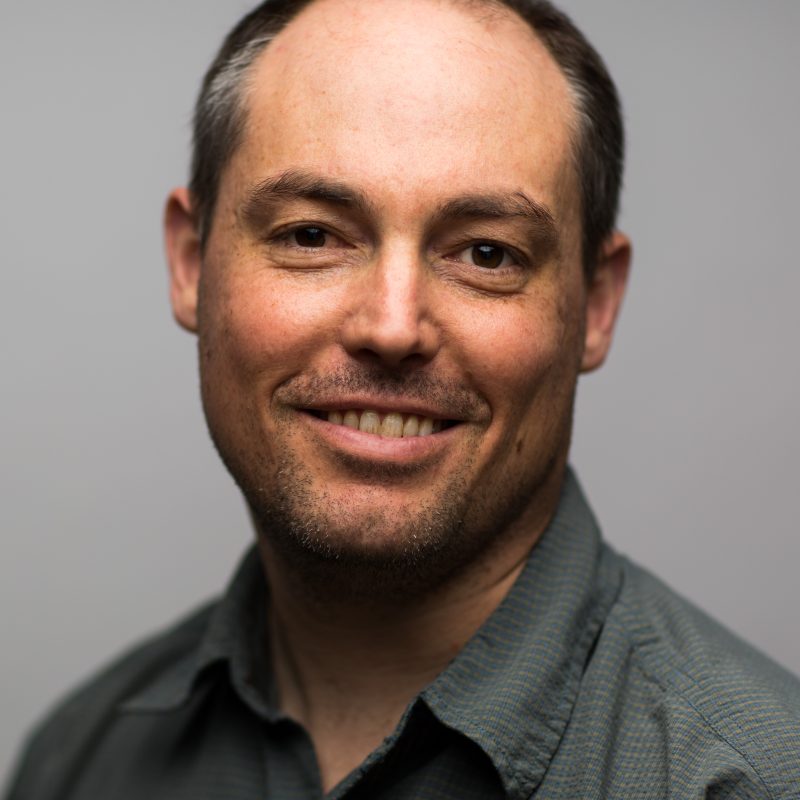
T.J. is a research scientist focused on interpretations of past climate from ice sheets. He uses ice core records spanning seasons to glacial cycles. His current projects include selecting sites to drill ice cores in Antarctica, imaging and interpreting ice core stratigraphy with electricity, and modeling how ice floes and deforms.
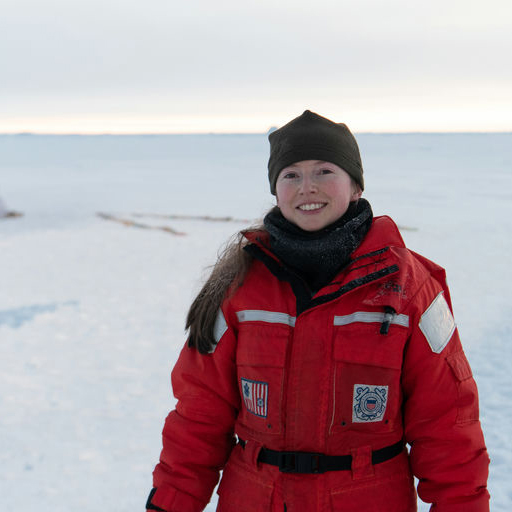
Clare is a postdoctoral researcher interested in the changing Arctic environment and its impact on marine ecosystems. She uses remote sensing with measurements of water and light collected during research cruises to study phytoplankton, the major source of energy supporting local ecosystems. Her current research focuses on how sea ice and water masses control phytoplankton communities and their growth cycles.
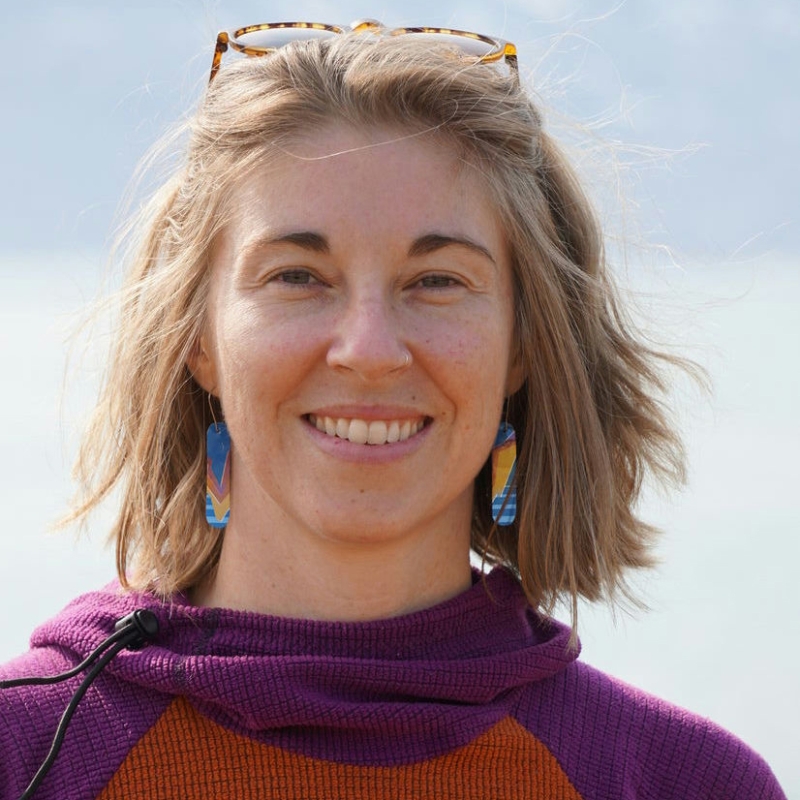
Amanda Gavin is a limnologist who focuses on freshwater lake response to environment change. Her research approaches emphasize community engagement and integration of knowledge sources. In South Greenland, Amanda’s research weaves contemporary and paleo-limnological techniques with Indigenous Knowledge towards a holistic understanding of carbon cycling and lake level in agricultural lake systems.
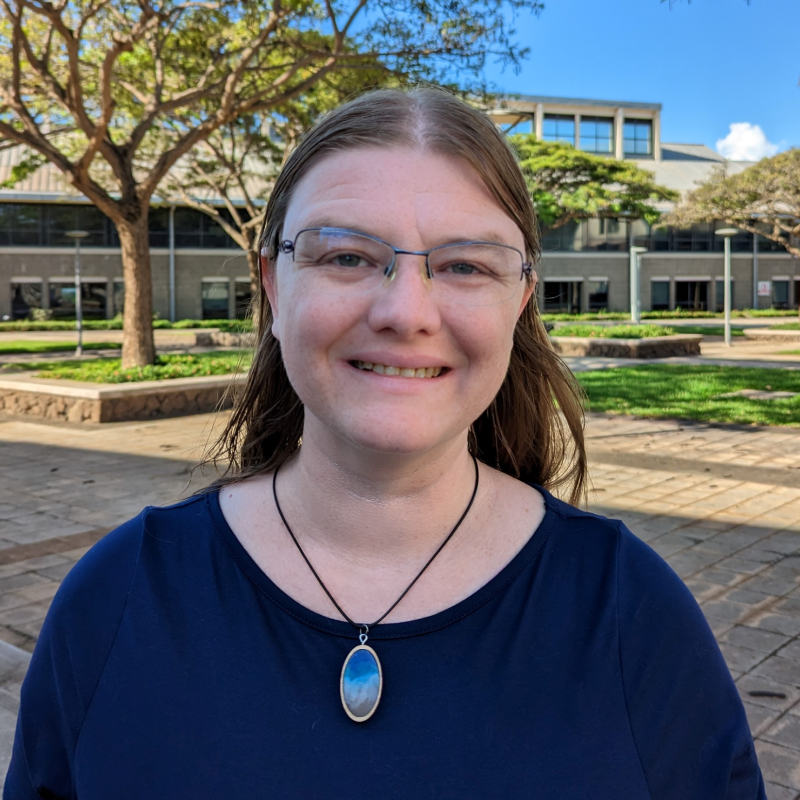
Sarah is passionate about teaching college-level earth science. Sarah encourages students to actively explore geoscience with hands-on activities, scenarios, and labs. She especially enjoys demonstrating the relevance of geoscience by teaching students about current challenges that we face as a society, such as climate change. She feels that it is important to teach students about hazard science and safety.
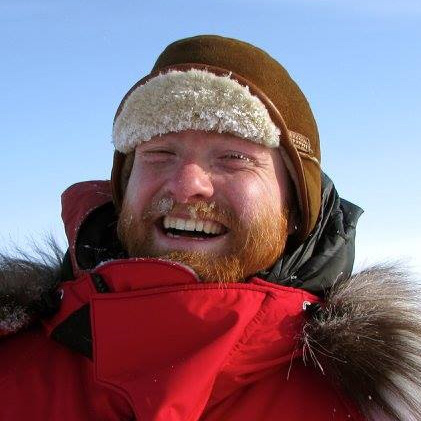
Tom is a postdoctoral researcher at the University of Alaska Fairbanks studying ecosystem change in the Arctic. He is particularly interested in interactions between animals and the cryosphere – how changing permafrost and snow affect wildlife, and how animals in turn alter permafrost and snow conditions. His current research focuses on beaver engineering in northwestern Alaska.
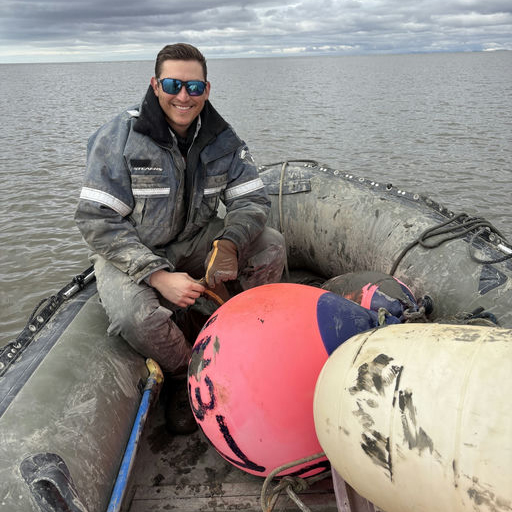
James is a PhD student in the Department of Fish, Wildlife, and Conservation Biology at Colorado State University. James is interested in population dynamics, demographics, and animal space use, with special interest in how these processes interact with one another and change through time. His current research investigates the demographic and population level consequences of differential migration and its associated carry-over effects on brant geese. In his free time, James enjoys fly fishing, hunting, hiking, and wildlife photography.
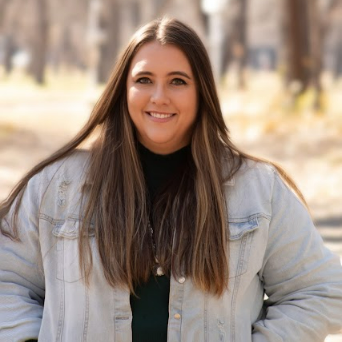
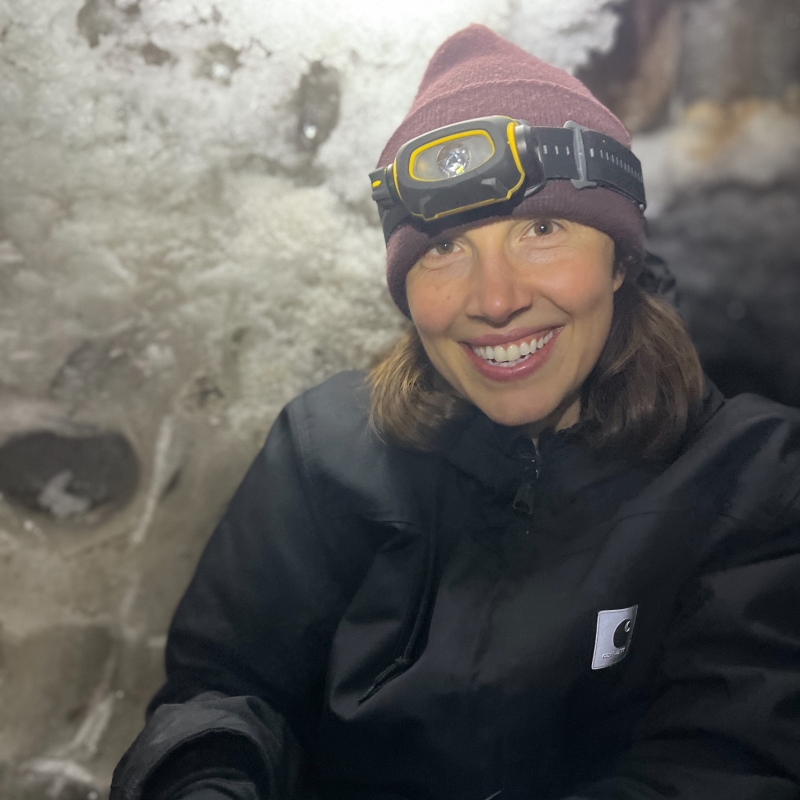
Julia is a groundwater hydrologist studying coastal groundwater dynamics along temperate and Arctic coastlines. Her research incorporates field campaigns and uses numerical models to better understand the two-way interactions between groundwater and the ocean. Julia is particularly interested in how sea-level rise, extreme weather events, and permafrost thaw impact the health and function of coastal ecosystems.
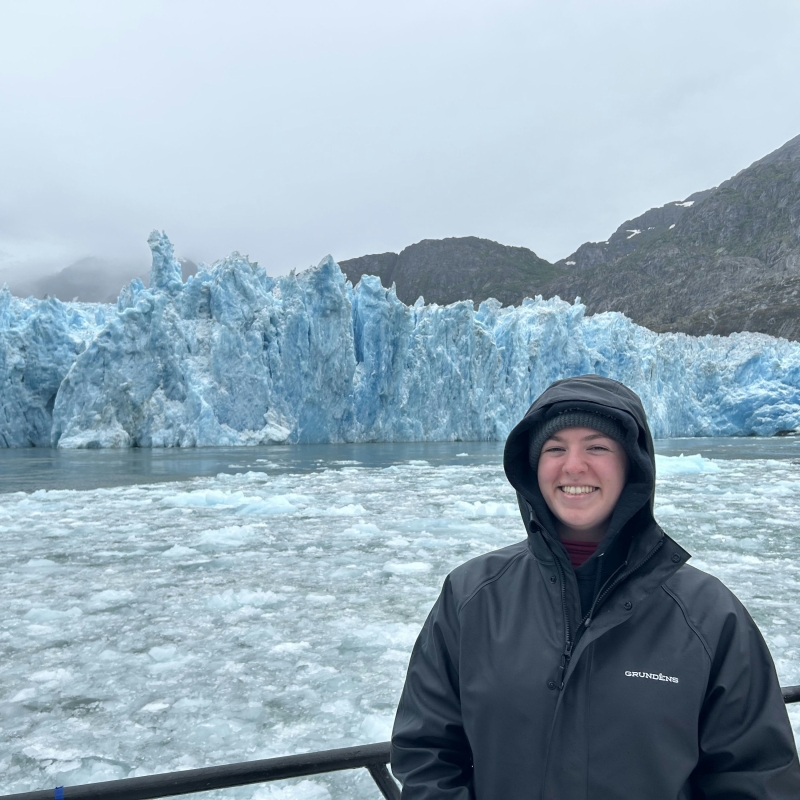
Vanessa is a PhD student in physical oceanography. She is currently studying the dynamics of freshwater plumes discharged by marine-terminating glaciers, and she is interested in understanding how freshwater plumes affect glacial melting and the surrounding fjord. Aside from her graduate studies, Vanessa is also a classical pianist, an avid crocheter, and a (slow) cross-country skier.
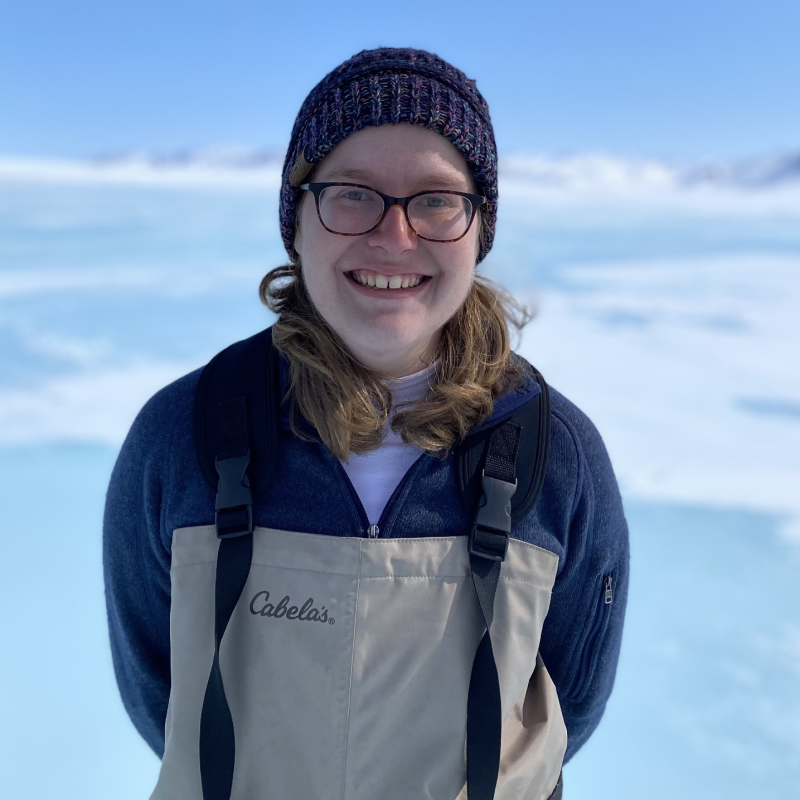
Tori is a PhD student studying Arctic spring-stream ecology. She is interested in how the ecosystem handles seasonal light patterns (i.e. no plants are active in the winter!) across different stream water temperatures. She is proud to be a southerner surviving winter in the Arctic!
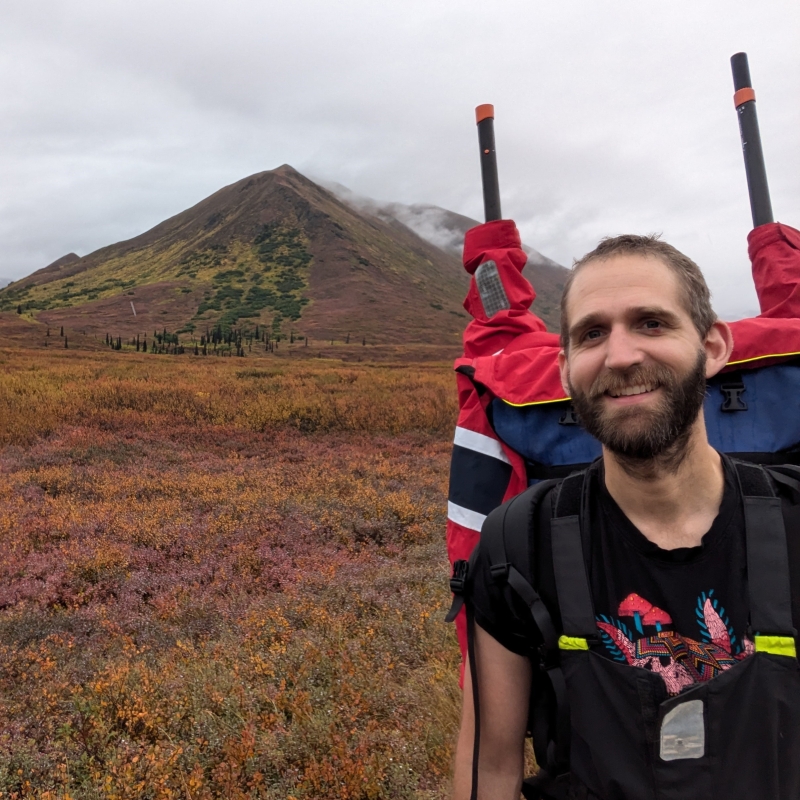
Will is an ecologist with a passion for plant and fungal diversity—which unfortunately means any attempt to get from here to there in the wilderness with him will take a little longer than it should as he documents and identifies plants along the way. His research focuses on ancient lineages of plants and how they respond to seasonal events like snow melt in the spring. Will has found a calling working in the backcountry leading teams of early career biological field technicians teaching them field botany skills and field science methods. When not working outside, Will spends free time adventuring with his dogs, fishing, foraging, rock climbing, and getting out on snowmachines, ATVs, and boats.
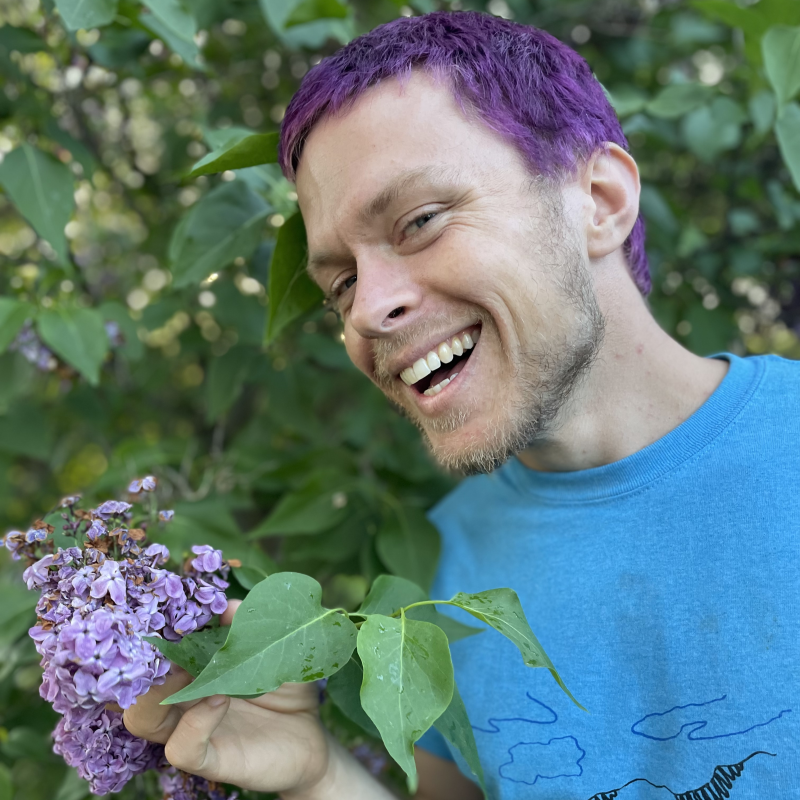
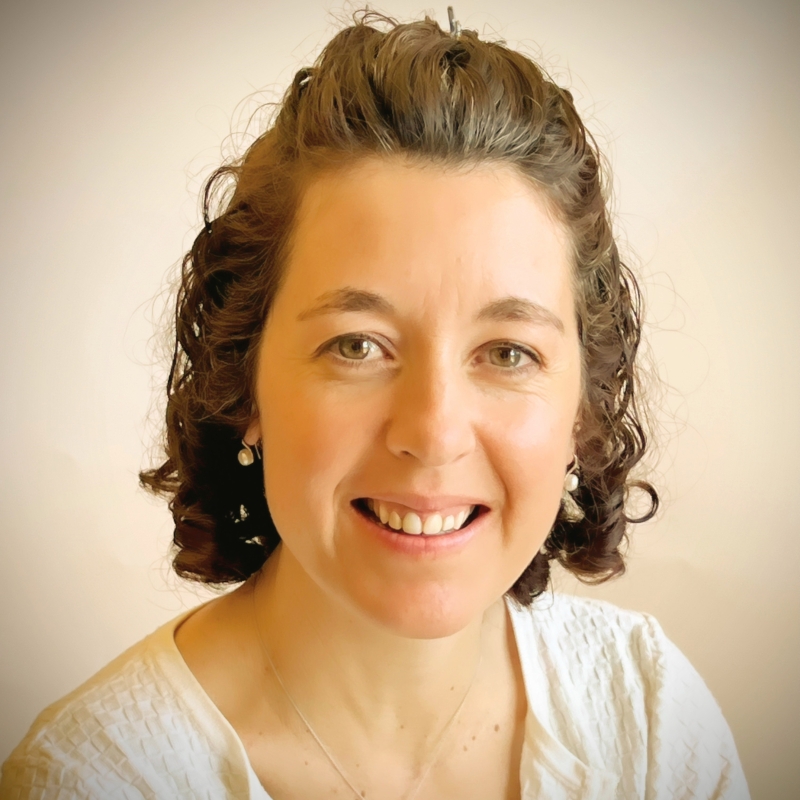
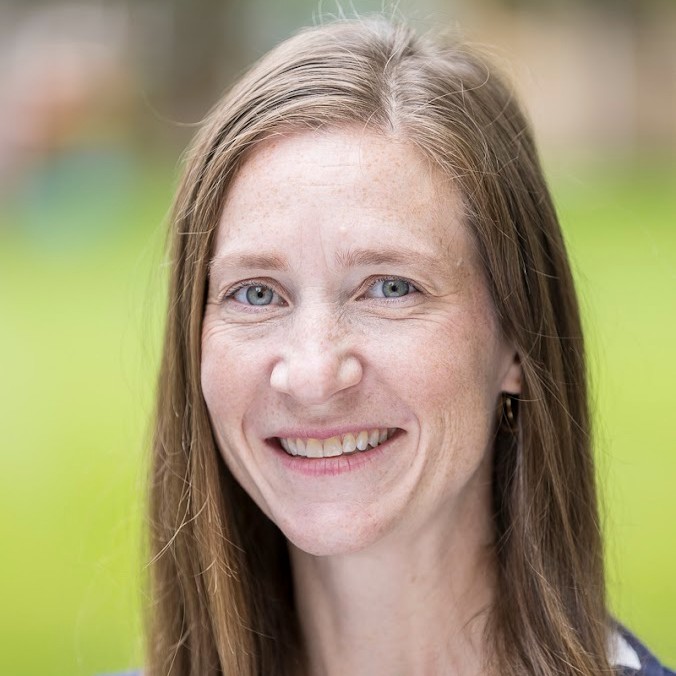
Mary is a plant ecologist who examines how carbon moves through ecosystems, and how this is changing with rapid warming in the Arctic. While working with her students, she aims to connect ecology to environmental justice and climate change. She has worked in Arctic Alaska and will be traveling to Arctic Norway this summer for the first time!

Naruki’s career objective is an integration of Earth science and pedagogy. He has developed and implemented a series of mobile online hands-on laboratory modules, which are available to all Americans, to achieve his goal. He is deeply involved in STEAM outreach collaborations with educators in Texas and beyond. His research interests exist in Cloud Microphysics, Atmospheric Ice Nucleation, Extreme Weather, and Aerosol Physics.

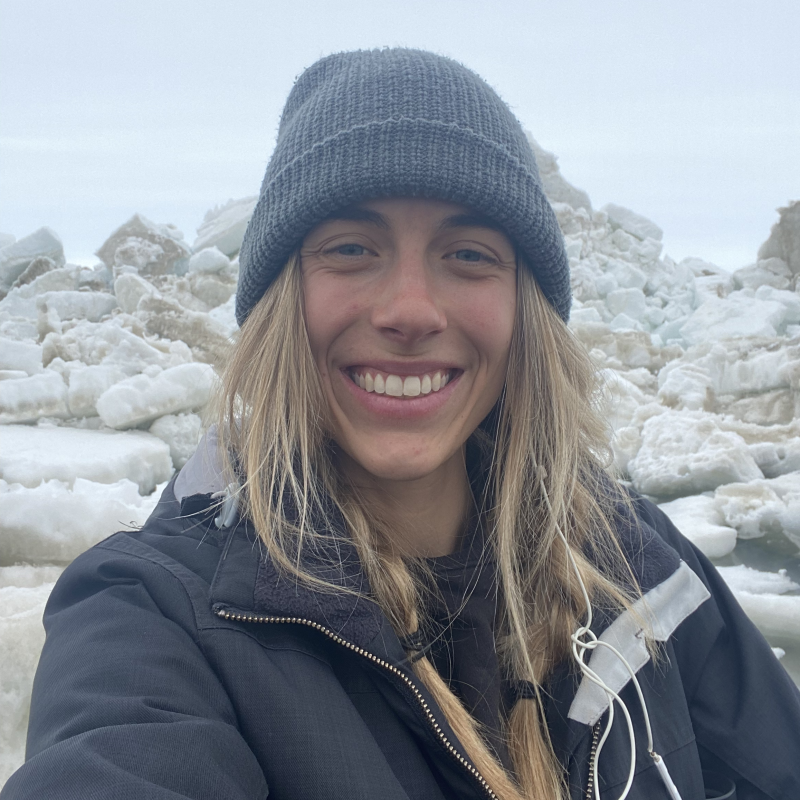
Macall is focusing her doctoral work on examining the effects of a warming Arctic ecosystem on stream carbon cycling in northern Alaska. Her project aims to quantify carbon transport across the tundra from drainage streams and determine how various landscape types and permafrost states might influence or control carbon fluxes. In her career, she hopes to work bridging Arctic research with Arctic conservation.
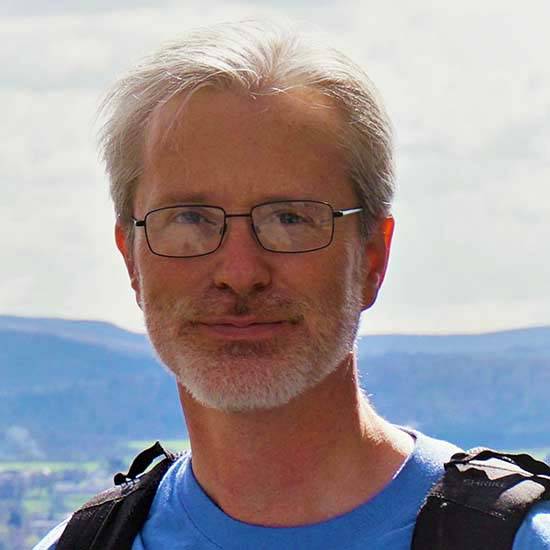
Bob Hollister has decades of experience doing research in the Arctic. He is currently co-chair of the International Tundra Experiment (ITEX) network and he leads a collaborative multi-disciplinary research project funded by the National Science Foundation as part of the Arctic Observatory Network (AON). His work, based at sites near Utqiaġvik, Atqasuk and Toolik Lake, is titled “Using the ITEX-AON network to document and understand terrestrial ecosystem change in the New Arctic.” These sites are now among the longest continually monitored vegetation studies in the Arctic.
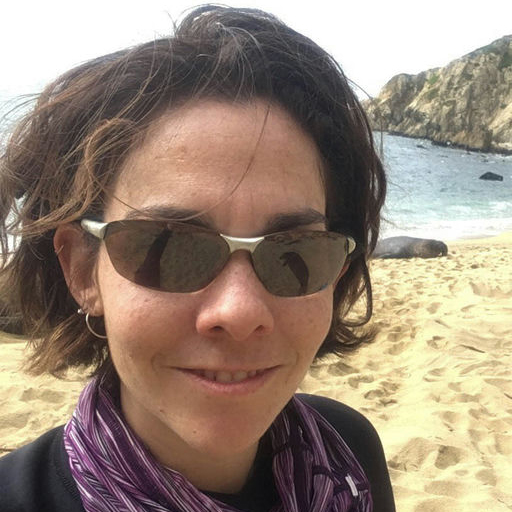
Rachel studies the behavior and ecology of marine mammals and how they relate to oceanographic processes. Rachel has a mixed academic background, having studied both chemical oceanography and ecology and evolutionary biology, and enjoys working at the interface of those two fields. Some of Rachel’s recent work includes: characterizing a major marine heatwave in the North Pacific and its effects on the reproduction and foraging ecology of the northern elephant seal; niche partitioning and foraging behavior of Weddell seals and penguins in the Ross Sea; and the movement and behavior of California sea lions in response to predators and human disturbance.
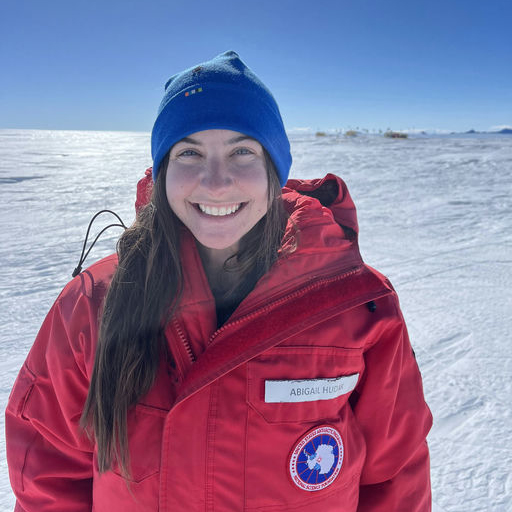
Abby is a paleoclimatologist interested in understanding climate dynamics in time periods that were warmer than today. She uses ice cores from the Allan Hills, East Antarctica–home to the oldest ice ever found on Earth–to uncover aspects of the climate over the past several million years. This old ice has many peculiarities, and some of her work aims to better decipher the climate archive within this ancient ice using geochemical techniques. By using high-resolution measurements of methane, water isotopes, and dust, the fidelity of the climate archive at the Allan Hills can be better interpreted and help researchers understand the ice core record that is now being extended millions of years into the past.
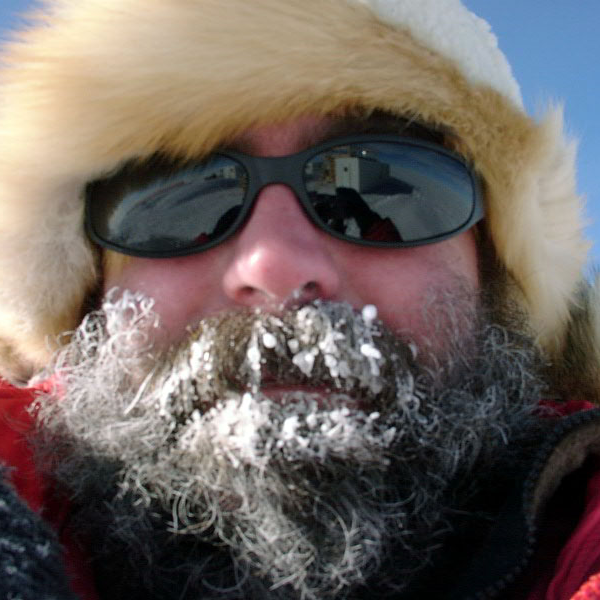
An educator for over 30 years, Rick has taught science and STEM courses from grade 5 to graduate school. For the last 14, he has taught future teachers how to love teaching science and STEM. Beyond the classroom, Rick has been engaged in several research experiences, been recognized for excellence in teaching, delivered professional development to STEM teachers in South Africa, participated in national and state-level science leadership, and in his free time he loves to bake and brew.

Hannah is a polar biogeochemical oceanographer at the Applied Physics Laboratory. She is interested in how different phytoplankton use different amounts of carbon, and whether this influences how much carbon the Southern Ocean takes up from the atmosphere. She especially loves finding fun ways to communicate her science to non-expert audiences.
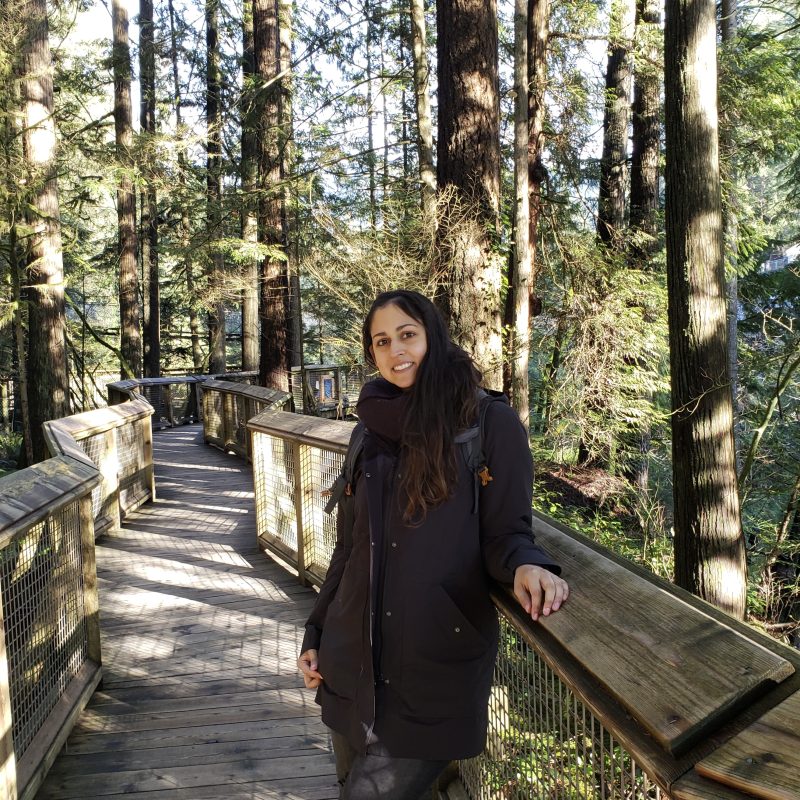
Fatima enjoys weaving science and storytelling together to create interactive lessons that bring diverse topics like astronomy and wetland ecology to life. Working as an informal educator in science museums, she uses technology and hands-on activities to empower learners of all ages to explore and understand the world of STEAM. In her current role leading virtual and onsite programming at the Pacific Science Center in Seattle, WA, she works to foster a sense of wonder, awareness, and stewardship and hopes that her passion for science communication inspires others to dive deeper into the topics sparking their curiosity.
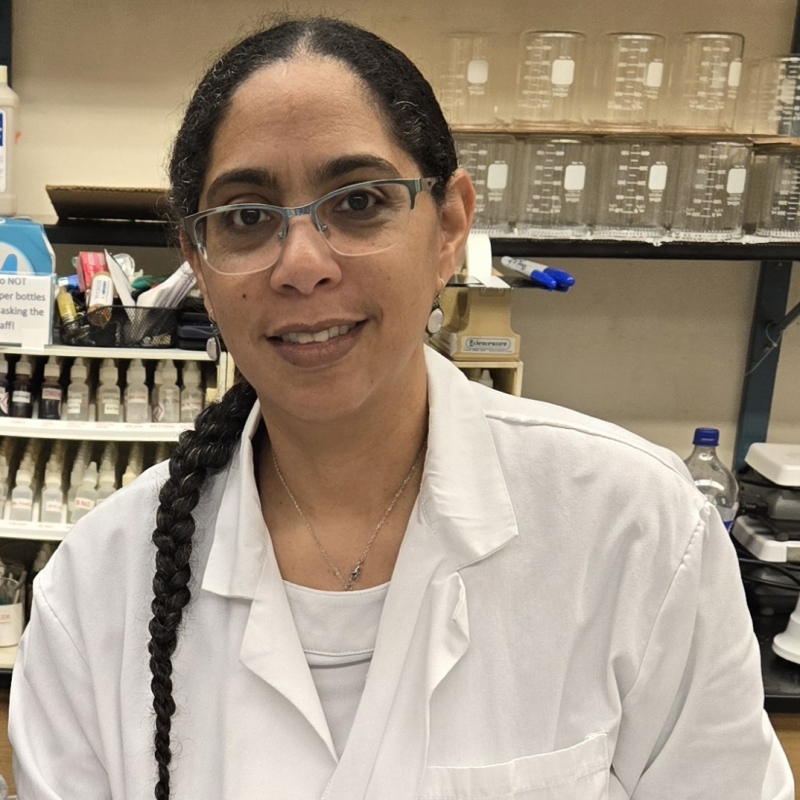
Shakira is an assistant professor currently teaching several physical science courses including Earth Science, Coastal and Marine Science, Environmental Science and Geology. Having spent 10 years working in coastal hazard assessments and climate change resilience in the Caribbean, she brings this experience into the classroom and is committed to empowering students with a greater understanding of earth’s processes. Through both active learning and field-based activities, she strives to help her students understand the dynamic planet and the role these processes play in our lives. Outside the classroom she shares her passion for the environment with the wider college community, serving as advisor to the student Sustainability Club and as a member of the college’s Sustainability Committee.

Sarah leads the Comparative Animal Ecophysiology Lab, and her research broadly focuses on understanding how animals work in the context of their environment. Her lab group studies the ecology, physiology, behavior, and evolution of large carnivorous predators (Seals! Whales! Wolves! Oh my!) to understand how individuals, populations, and species are coping with rapidly changing environments. She is an avid and fast reader (mostly fiction books), a COVID-inspired gardener, a slow but steady runner, a world traveler, and mother of two hilarious, busy, and awesome sons.
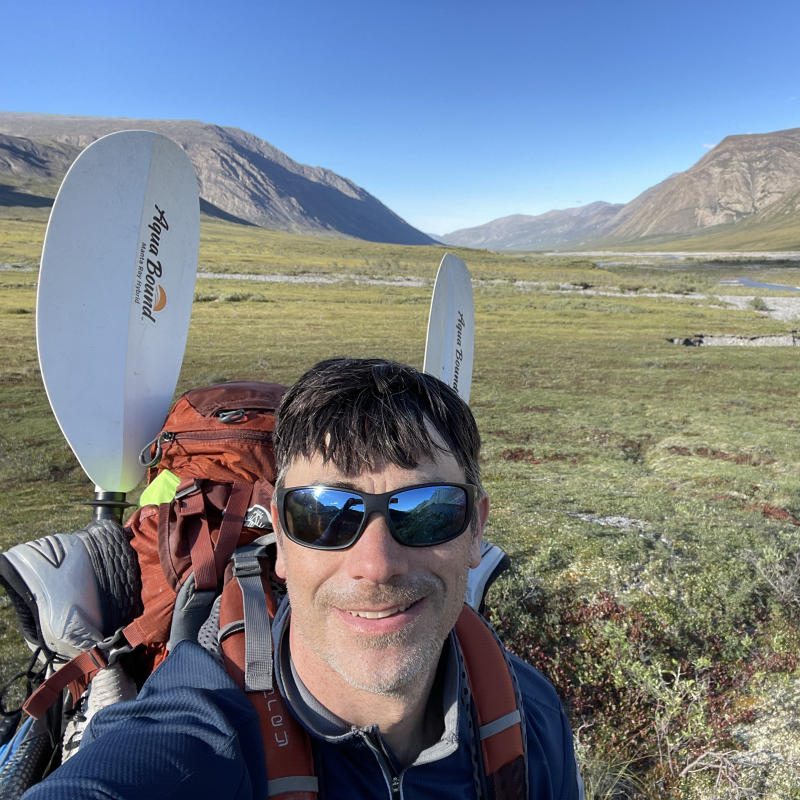
Eric is an Assistant Professor in the Department of Geological Science at the University of Alaska Anchorage. His hydroclimate research explores how water moves through the Earth and leaves different signals (some physical, others biological or chemical) that allow us to understand its distribution and impacts across multiple time periods, landscapes, and phase changes. He uses field instrumentation and stable water isotope ratios to understand the movement and relationship between modern hydroclimate variables, such as precipitation, glacier melt, and stream discharge. Much of Eric’s current research is in high northern latitude and Arctic environments.
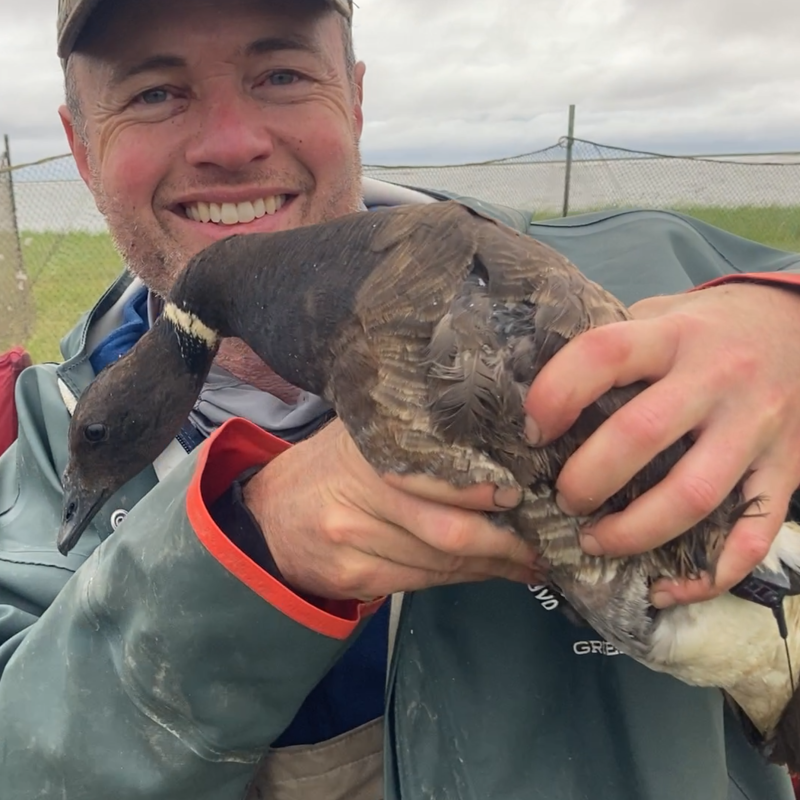
Dave is a professor of population ecology that studies the demography, population dynamics, trophic dynamics, and life history evolution of vertebrates in changing environments. Recent interests include studies of the trade-offs and fitness consequences of differential migration strategies in Arctic geese amidst climate change. On a daily basis he enjoys mentoring graduate students and teaching quantitative ecology to young learners.
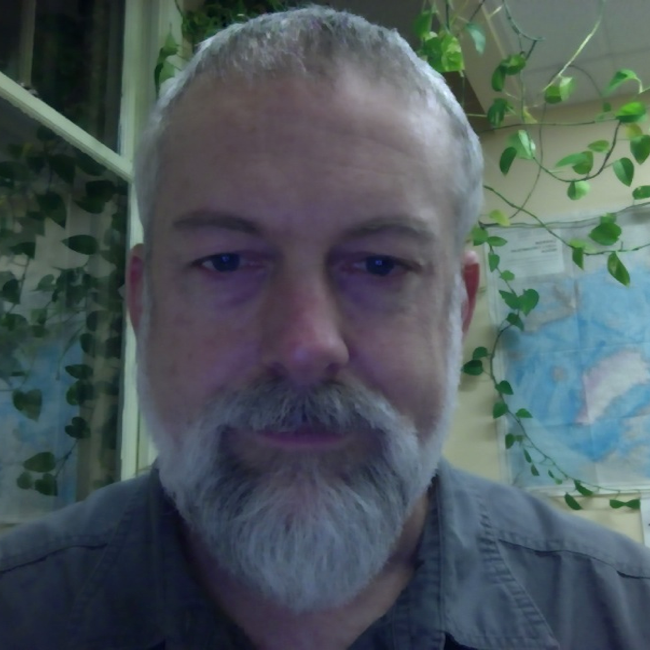
Mike is a cultural researcher and teacher (anthropologist) who has worked with Indigenous people and their communities over the past 35 years, first in Belize, then in Saudi Arabia, later in Siberia, and now in Alaska. Mike’s research focuses on oral history, traditional knowledge, ethnohistory, culture change, decolonization, Indigenous food sovereignty and security, resource use and allocation, and Indigenous cosmology/mythology. Foremost, Mike is committed to the co-production of knowledge with locals, recognizing that informal knowledge is often overlooked.
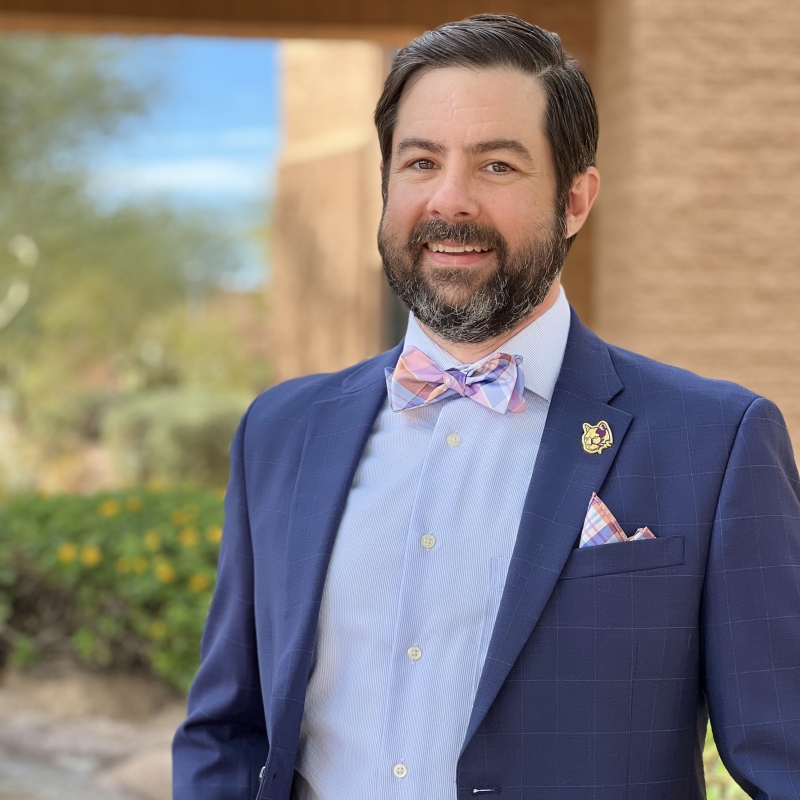
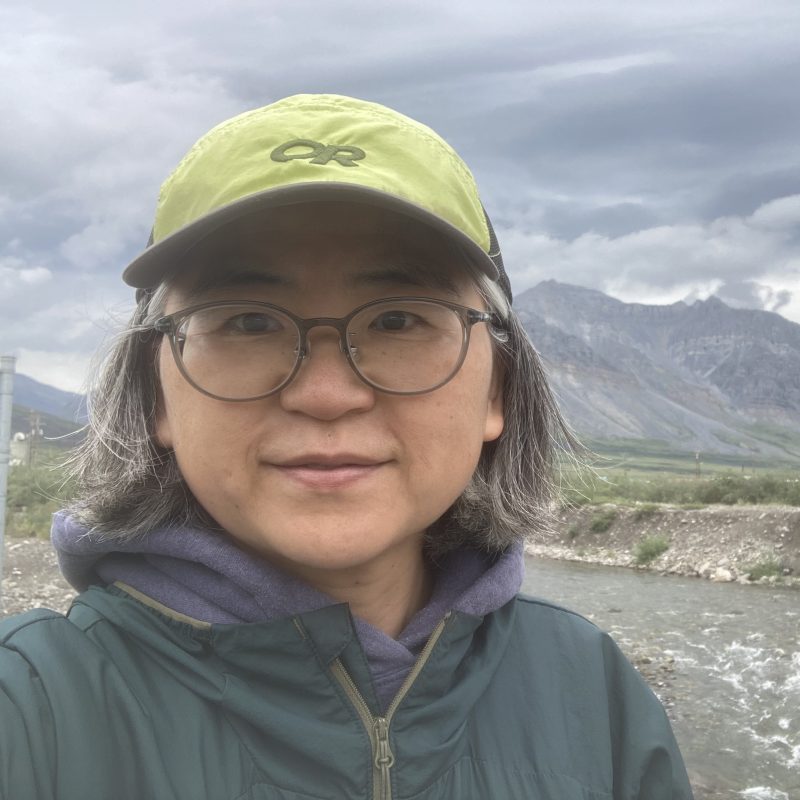
Yoko is a cultural anthropologist/ethnographer. Her research interests include oral history, Indigenous/traditional/local knowledge, ethnogeography, and Alaska Native languages, cultures, food lifeways, and history. Besides teaching and conducting research, Yoko enjoys learning about other cultures through languages, cooking locally harvested food, berry picking, walking, boat and four-wheeler rides, and basketry weaving.
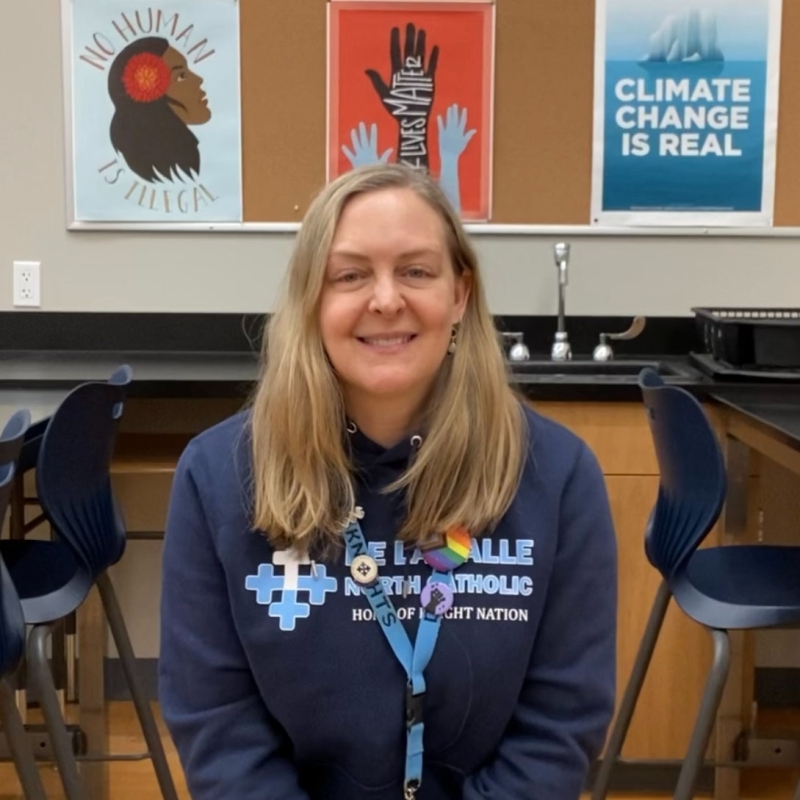
Amy teaches Biology and Anatomy & Physiology to high school juniors and seniors. She incorporates as much hands-on learning and data analysis as she can into her teaching. She loves curriculum design, and her favorite topics to teach are Evolution and Ecology. Before becoming a high school teacher, Amy conducted her masters research on coral reproduction at the University of Hawaii at Manoa. She also worked for several years as a research diver and an environmental educator. When not teaching, Amy loves to spend time with her family, hike, dance, swim and visit museums.
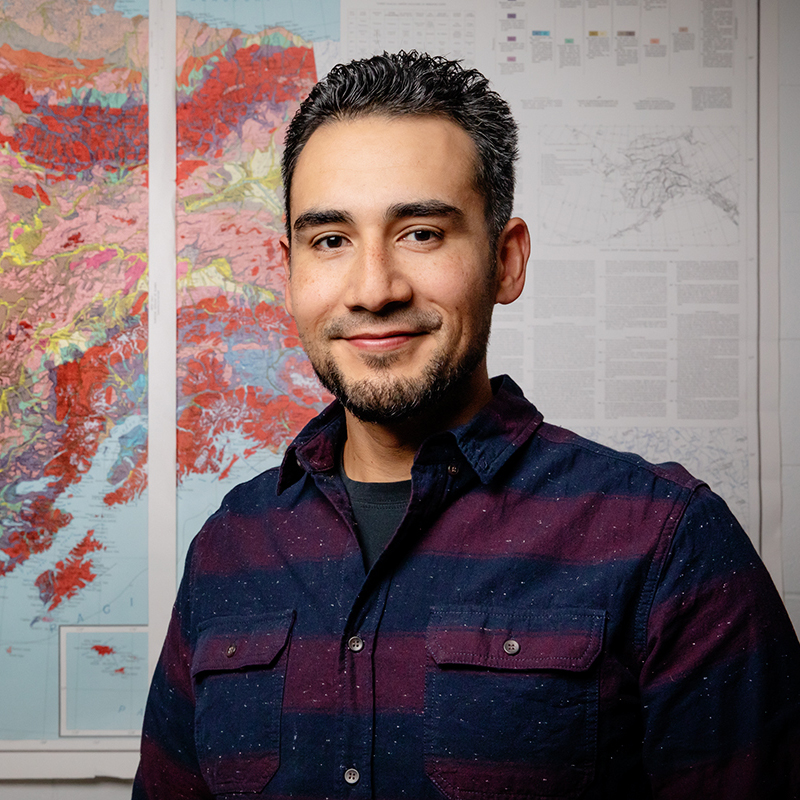
Mark is an ecologist who studies the causes and consequences of high-latitude land cover change driven by warming, wildfire, and permafrost thaw/degradation. His research focuses on detecting, modeling, and forecasting permafrost-driven landscape evolution using drones, aircraft, and satellites. This is done while measuring, mapping, and modeling associated patterns of vegetation change. He aims to enhance our understanding of the state and fate of the Arctic system in a changing climate.
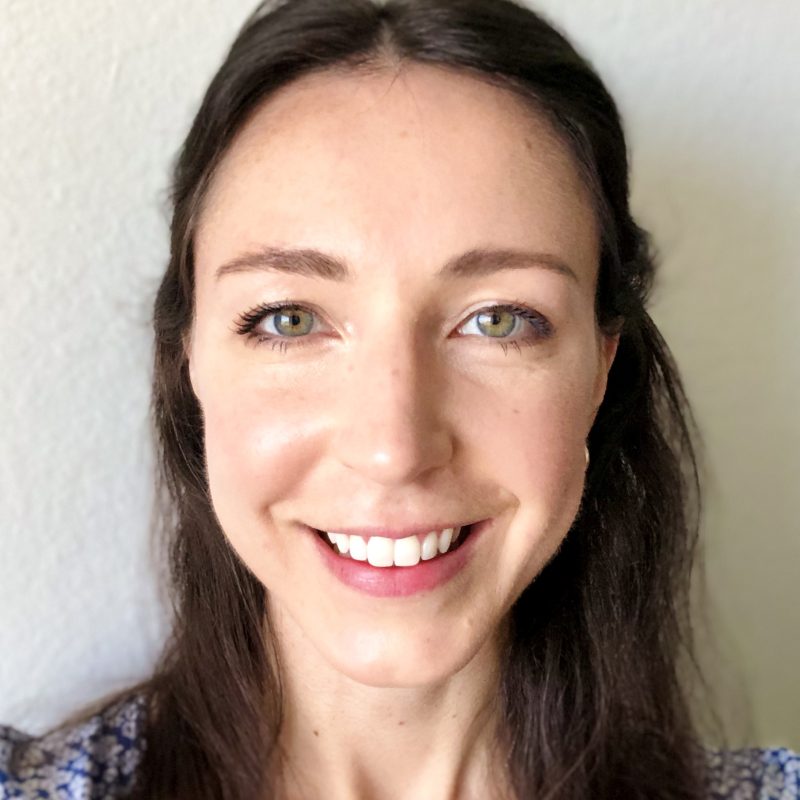
Laura is a climate scientist interested in past (Holocene) and contemporary climate change and its impact on Earth systems, with a particular emphasis on the Arctic cryosphere. Her work employs a variety of approaches including the use of sediment and other natural archives; historical and remotely sensed observational records; and geospatial tools and modeling to better understand how glaciers have, and will change in response to climate changes. She is also interested in climate science education and communication of polar research to broad audiences.
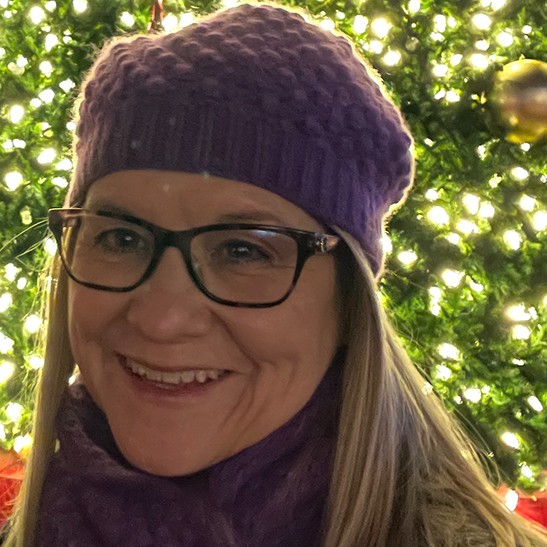
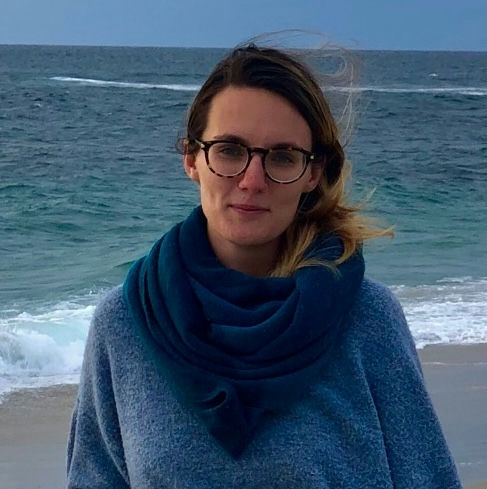
Margaret is a physical oceanographer studying ice-ocean interactions across scales from the subpolar North Atlantic to Greenland’s glacial fjords. She uses observations from ship-based and moored instruments to understand exchanges of heat and freshwater in the ocean around East Greenland. These dynamics are crucial to the large-scale ocean circulation and climate as well as to sustaining vibrant ecosystems that are central to local communities.
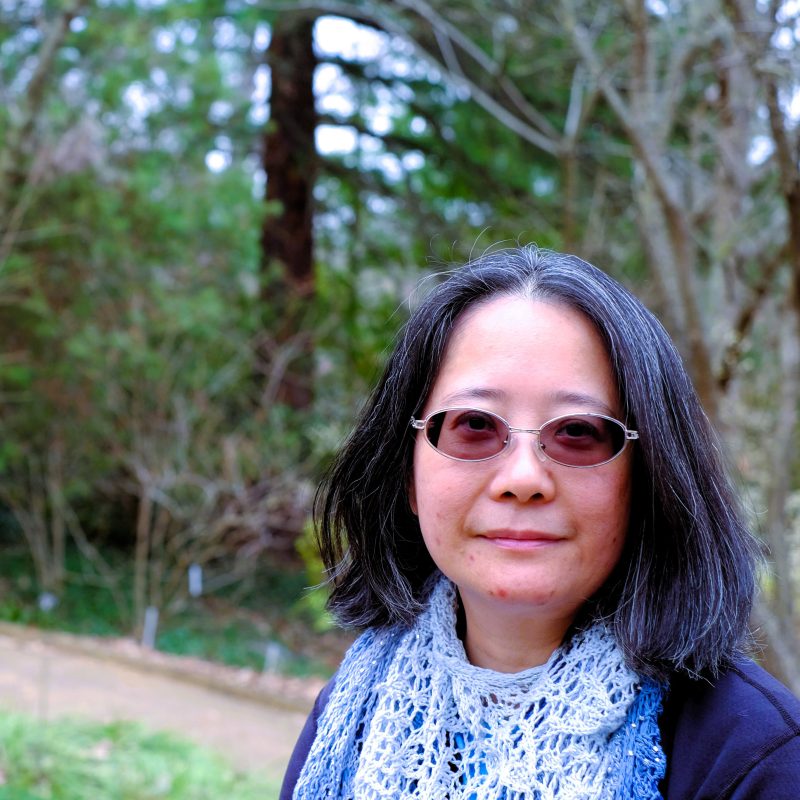
During her doctoral work in experimental condensed matter physics, Kris caught the teaching bug. Much of her career has been spent teaching introductory college-level physics at a two-year college, where she engaged students in a studio classroom. She now is the Director at The Organization of Physics at Two-Year Colleges and spends most of her time running professional development for two-year college and high school physics teachers. She is actively working to reinvigorate physics curriculum and hopes to use polar science as a way to do this.
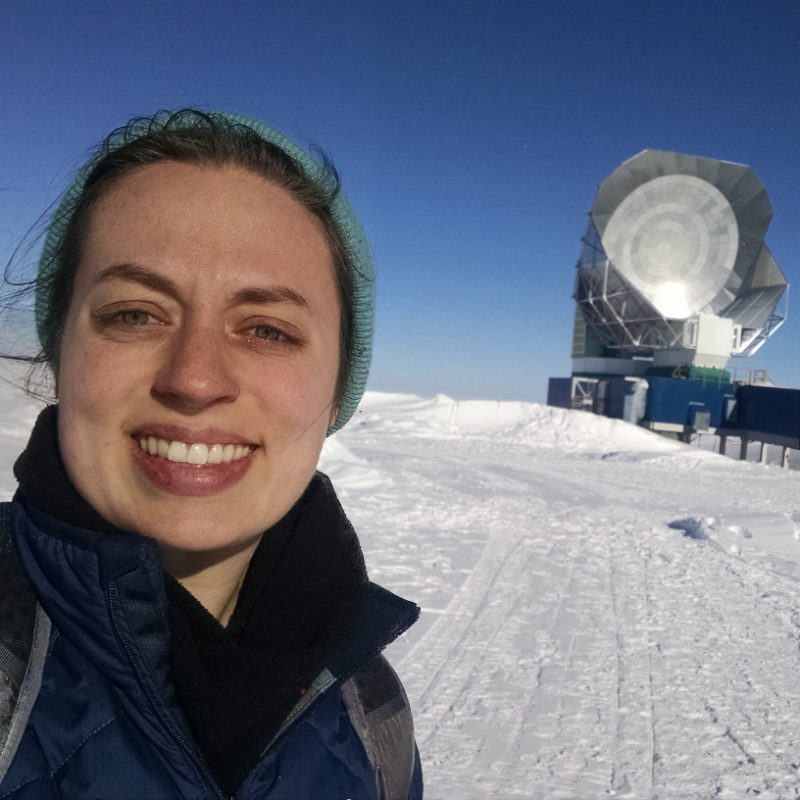
Dr. Amy Lowitz is a scientist in the Astronomy Department at the University of Arizona. She works on the Event Horizon Telescope (EHT), a global array of radio telescopes that work together to image and study supermassive black holes. Amy designs new hardware and systems to make EHT observing more efficient. She also oversees EHT observing at three of the EHT telescope sites: the South Pole Telescope, the Submillimeter Telescope, and the Kitt Peak 12m Telescope.
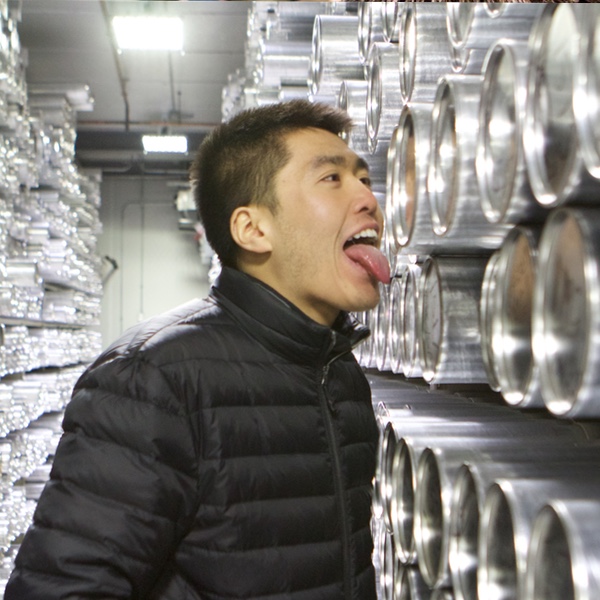
Merlin is an incurable tinkerer who hasn’t yet met a research topic he disliked, which means he’s in a happy place as a postdoctoral researcher in Electrical and Computer Engineering. His cryosphere work centers on designing and building new instruments—in collaboration with glaciologists, geologists, biologists, atmospheric scientists, and others—to better retrieve, measure, and analyze glacier ice and the paleoclimate indicators it holds. These devices have of late begun to incorporate high-power infrared lasers, giving Merlin hope that he will soon be promoted to Mad Scientist.
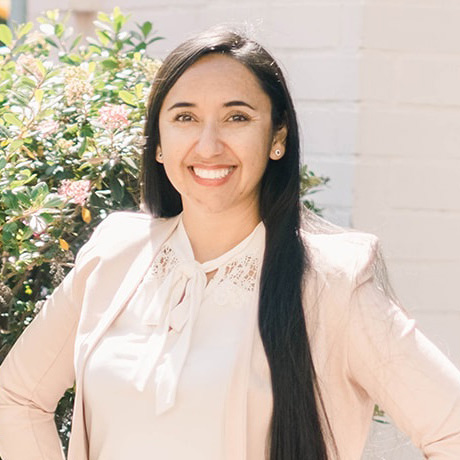
Monica is Teacher on Special Assignment (TOSA) overseeing the Science Programs for Montebello Unified School District. She leads a team of educators in developing and implementing Environmental Literacy content as it relates to climate change aligned to the Next Generation Science Standards (NGSS) and the Environmental Principles and Concepts (EP&Cs). She also currently teaches the Natural Disasters course at Cal State Los Angeles.

Amanda’s career in STEM began with outdoor education in the mountains of Big Bear, CA and on the beaches of Catalina Island. Her experiences took her south to Costa Rica where she taught middle school science. Amanda has since co-designed the middle school STEM curriculum for the Corvallis School District and continues to teach it today. She actively encourages her students to try new things and expand their scope by integrating real-world teachings into her lessons. Amanda lives with her family in Corvallis, OR where she is a board member of the Ten Rivers Food Web as well as an active member of her community.
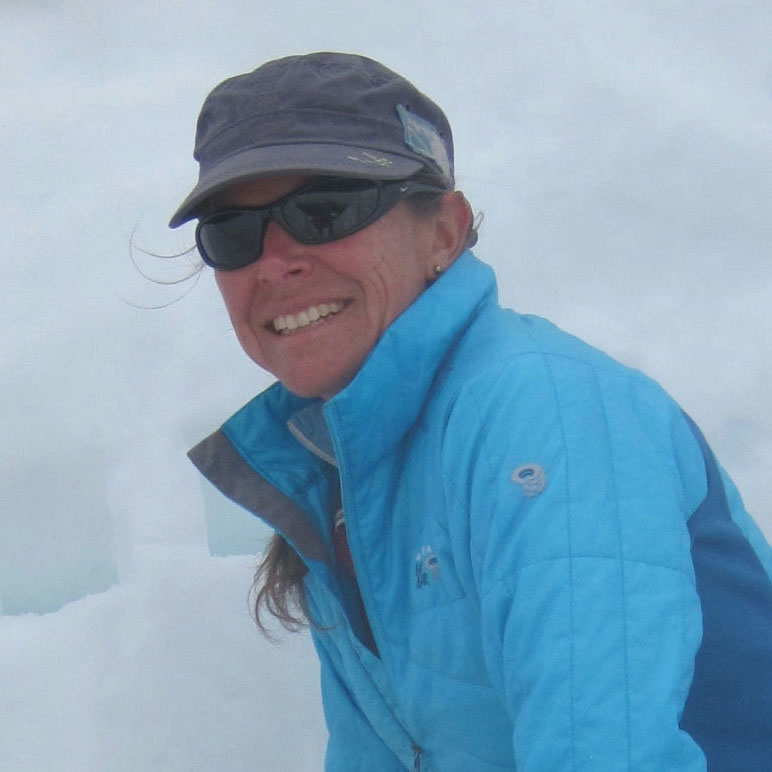
Dr. Murray, a molecular microbial ecologist and biological oceanographer, researches Antarctic free-living and symbiotic microbial life using molecular and genomic approaches to explore diversity, evolution, and ecological roles. She has been instrumental in developing environmental genomics technologies that enable the detection and study of microorganisms directly from environmental samples, bypassing the need for cultivation. Her interdisciplinary research integrates oceanography, geosciences, computational biology, astrobiology, and chemistry, and she collaborates with scientists worldwide to advance knowledge of microbial life in some of the harshest conditions on Earth.
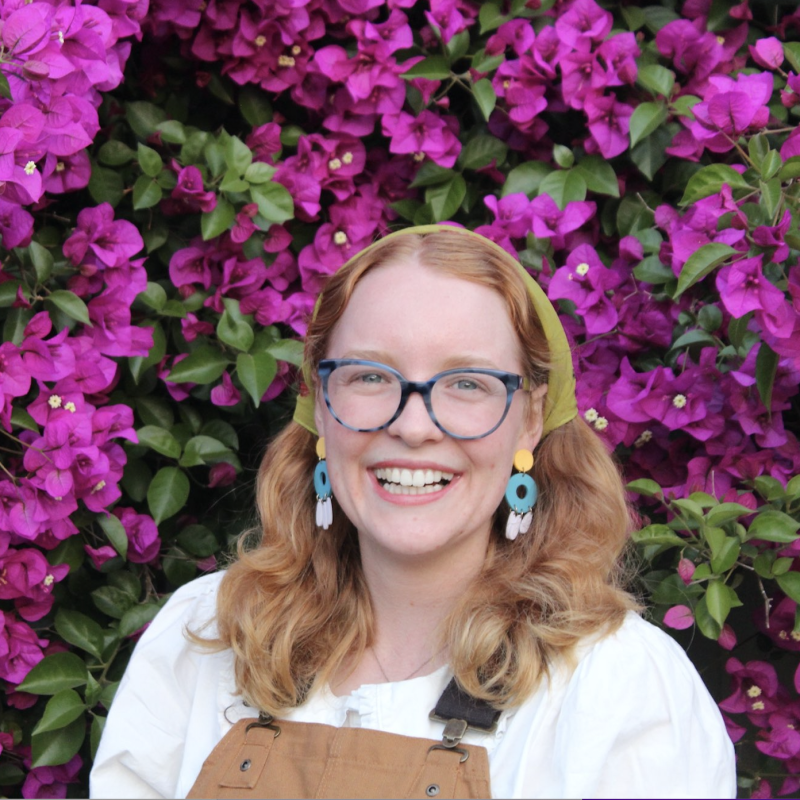
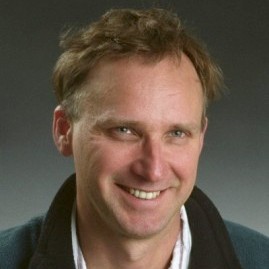
As a teacher, Steven is interested in the potential of active learning as enhanced by modern bona fide computational tools — like electronic structure software (e.g. Spartan) that allow one to probe molecular properties, or the use of reanalysis software (e.g. Earth.nullschool.net) that allow one to visualize synoptic weather systems. As a researcher, a lot of his work focuses on ice in the climate system: from its molecular properties, to growing cirrus-like ice crystals in a scanning electron microscope, to modeling that growth with partial differential equations, and to how clouds and snow interact with sunlight. He is further interested in how those interactions are shifting in response to a changing climate.

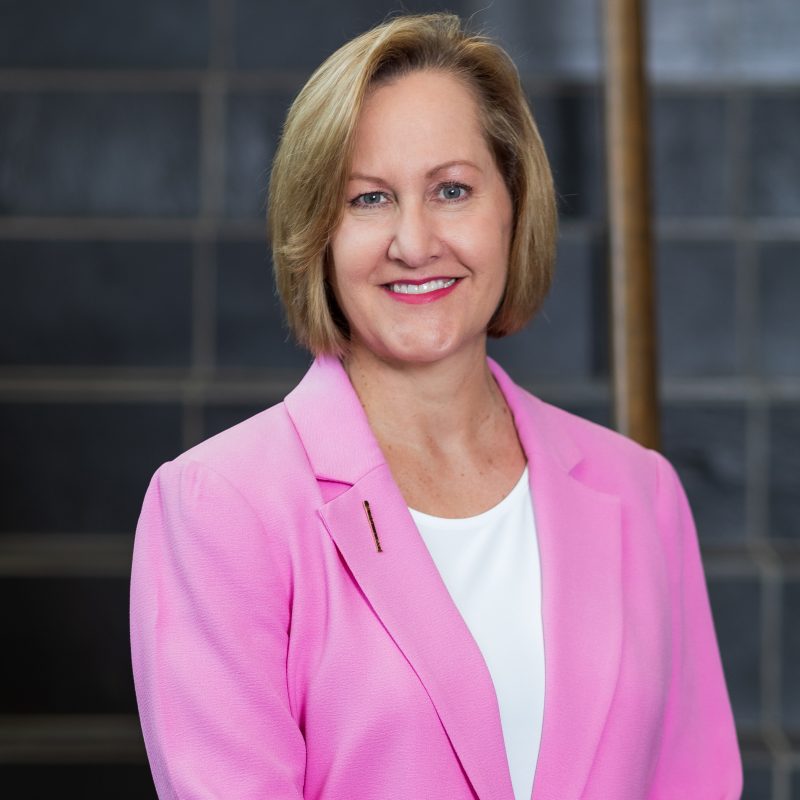

Logan is an ecophysiologist with a primary interest in understanding how marine megafauna populations alter their physiology and demography as a response to changes in their environment. To address these questions, Logan collects minimally invasive tissue samples (e.g., blood/skin) and then uses molecular and endocrinological markers to answer specific questions about population health and reproduction/stress physiology. He works on multiple species of large marine megafauna worldwide and continuously advocates for ethical animal research and effective conservation and policy. Much of Logan’s work to date has been focused along the Antarctic Peninsula, the South/Central Pacific, and the coast of California.
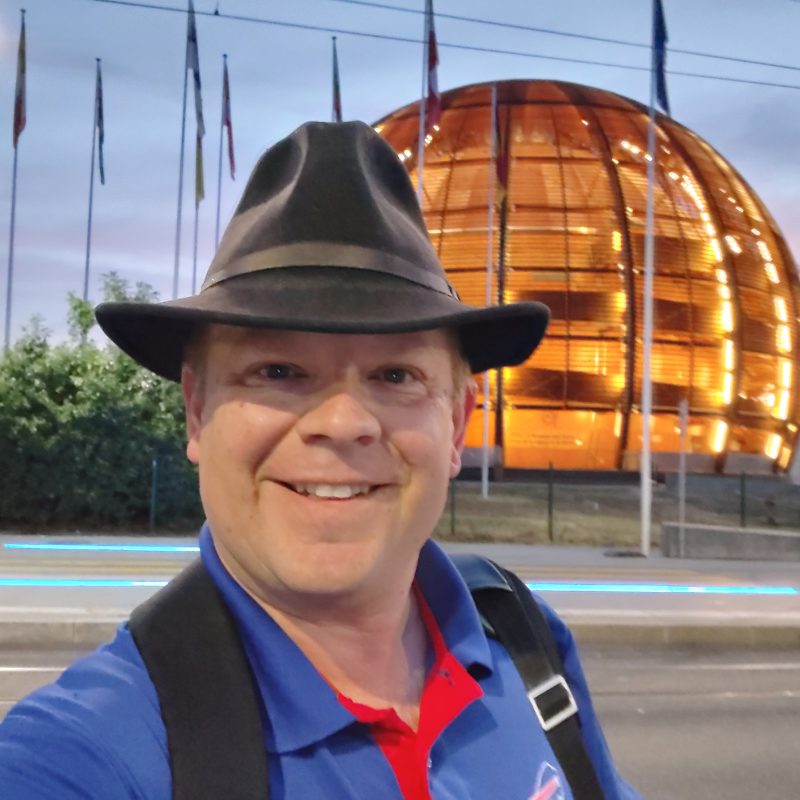
Joseph teaches Regents and dual credit courses in Earth and Space Sciences at Palmyra Macedon High School in upstate New York. He is also an educational specialist for test development and serves as a regional mentor teacher. He strongly believes in integrating outdoor field experiences with his learners and works to create an inclusive environment for all students regardless of their ability. He brings experience in curriculum design and collaboration from past fellowships that will serve him well during his Polar STEAM collaboration.
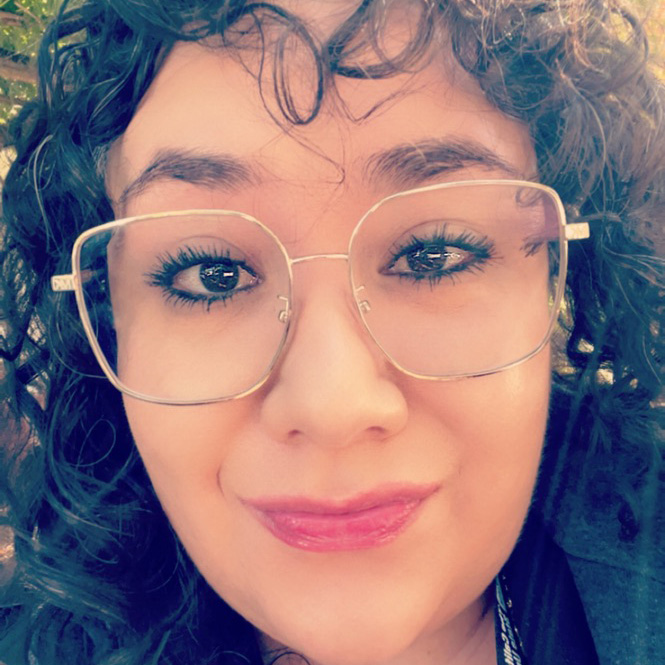
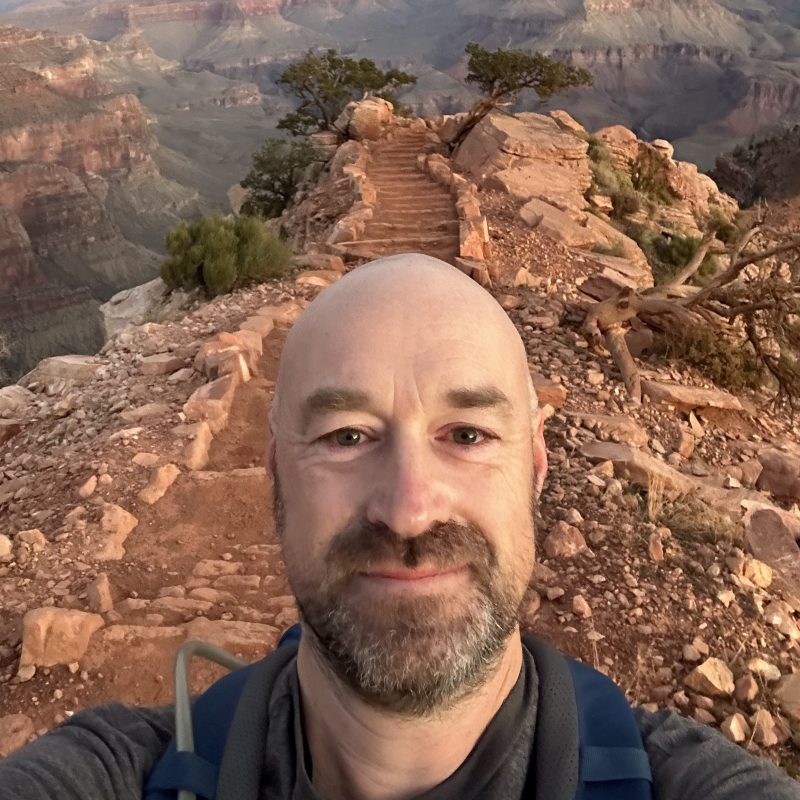
Filippo is an Applied Mathematician who strives to create connections for his students between Mathematics and their ambitions. Filippo facilitates learning by taking advantage of Open Educational Resources (OER) and technology so that students have a modern and accessible scaffold to build their learning. He often develops data-driven assignments that incorporate student passion and ideas. He has established a student research group in Mathematical Modeling and Analytics where he encourages students to present at national conferences and publish in undergraduate journals.
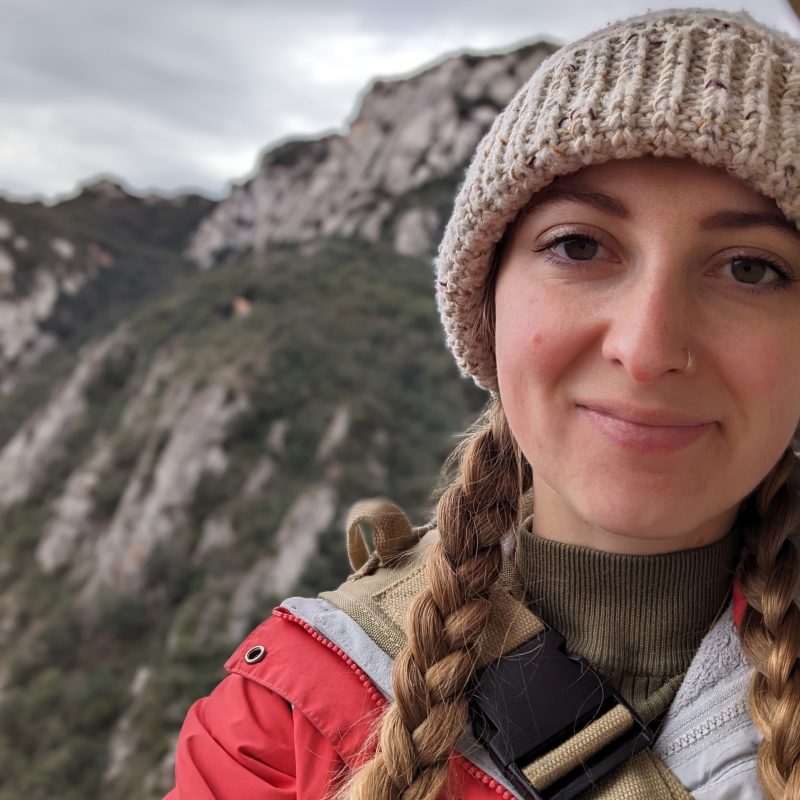
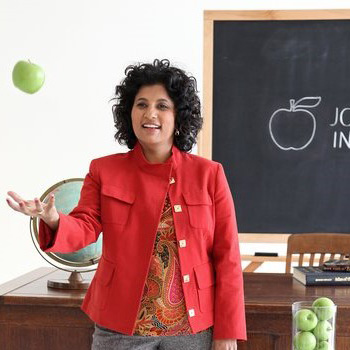
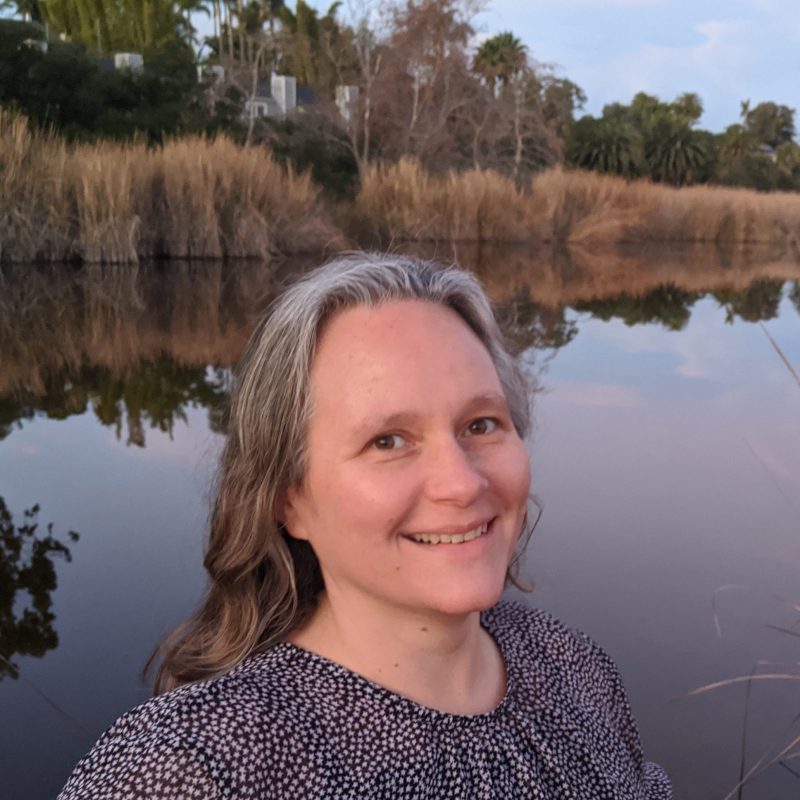
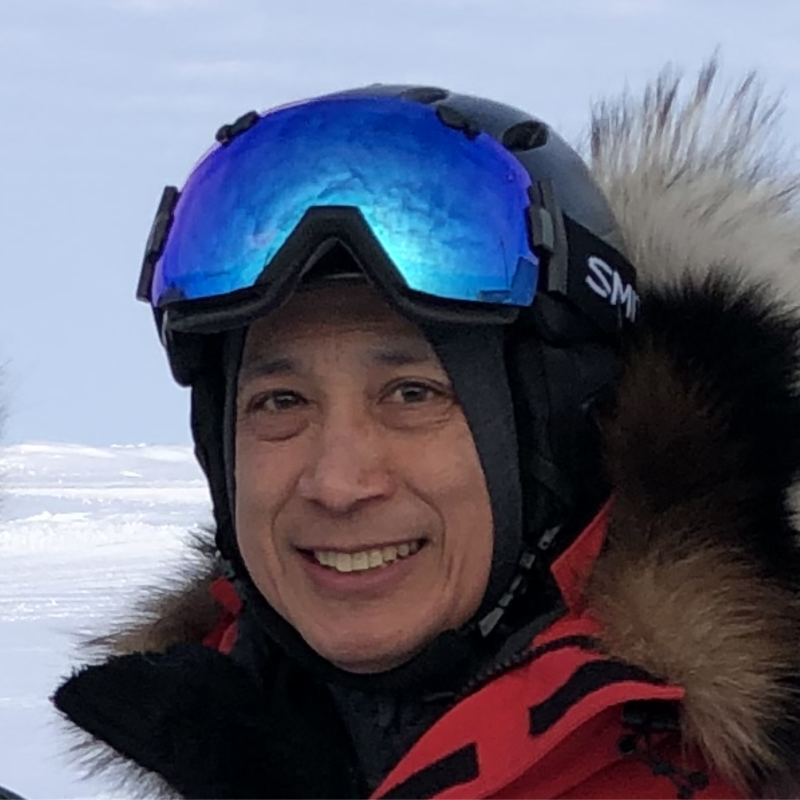
Ignatius is a climatologist at the Polar Science Center, Applied Physics Laboratory, and an affiliate associate professor in the School of Oceanography at the University of Washington in Seattle. Dr. Rigor studies sea ice, and how it interacts with the atmosphere and ocean. His primary tools for research are observations from drifting buoys and satellites.
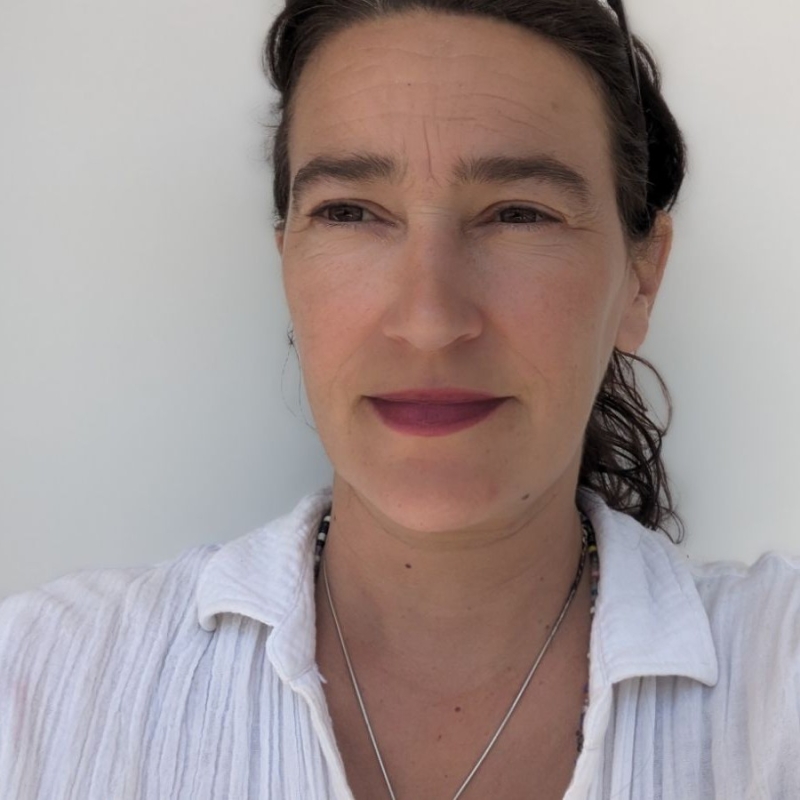
Through her Physics teaching, Joanna strives to expand experiential, project-based, and inquiry-focused courses at her college. She worked with NASA as a graduate student and was a professional on Shuttle’s Return to Flight. As an educator, she leads student projects in High Altitude ballooning and sound rocket payload design. She is currently working with the Nationwide Eclipse Ballooning Project.
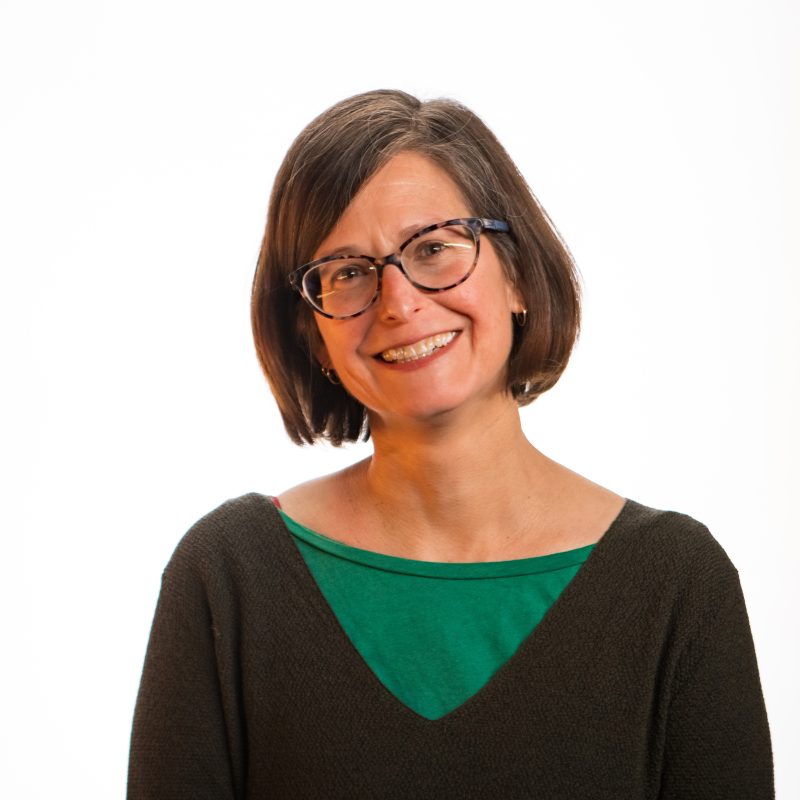
Rebecca Robinson is a paleoceanographer who studies how carbon and nitrogen move through the earth system. Of particular interest is how stable isotope proxies record the history of nitrogen cycling in the ocean. Proxy records of nitrogen drawdown in the Southern Ocean are an important piece of evidence for the roles of ocean biology and circulation in regulating atmospheric carbon dioxide across ice ages
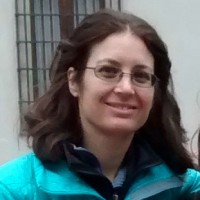
As an atmospheric physical chemist, Penny studies the greenhouse effect of clouds and trace gases in polar regions. Recently, she has also been investigating the interactions between clouds and shortwave and longwave radiation, and the role they play in extreme warming and precipitation events in Antarctica. Her work also includes creating computational modules that bring polar research into the undergraduate classroom.
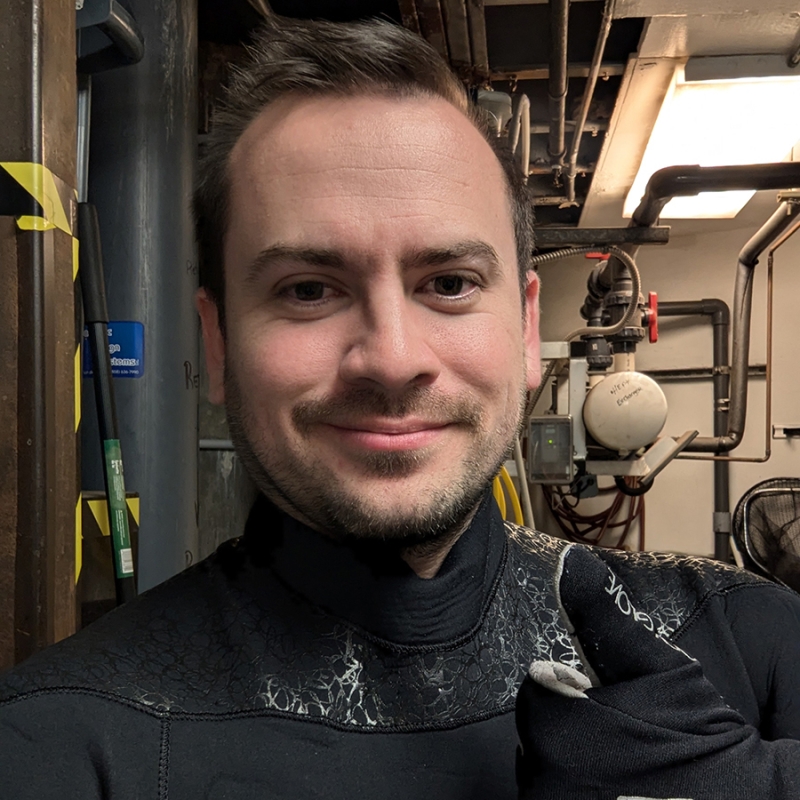
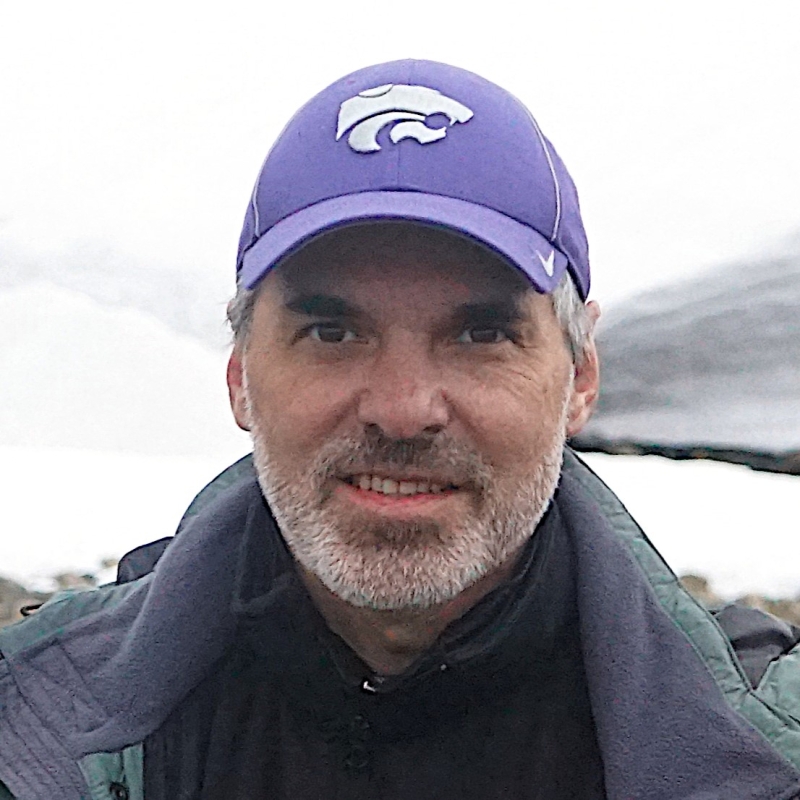
Aleksey is a hydrologist with interests in sustainable water resources under changing climate in the cold regions. He collects micrometeorological data at several Arctic sites and models the dynamics of unfrozen water and temperature in frozen grounds. He collaborates with geoscientists, biologists, and anthropologists to better understand the impacts of the warming Arctic on hydrological, biological, and social systems.
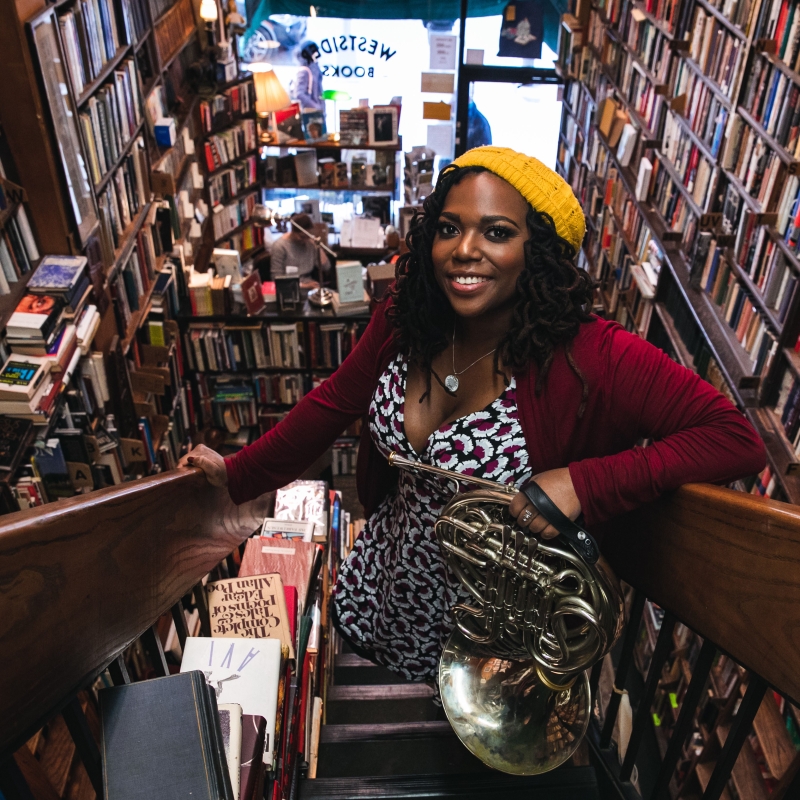
Kyra Sims is a musician, writer, and performance artist residing in New York City. Inspired by Afrofuturist themes, she creates soundscapes, song cycles, and experiential work, drawing from elements of her life and from the world at large, while also examining and dancing with the alchemy between performer and audience.In addition, she has worked as a backing musician with Lizzo, Jon Batiste, Earth, Wind and Fire, Carole King, Taylor Mac, and many other artists. She has performed as an ensemble member and soloist all over the world, in venues such as Carnegie Hall, the Kennedy Center, Chicago Shakespeare Theatre, and the Hollywood Bowl. Her Broadway credits include the Tony award winning musical Illinoise, and Drama Desk-nominated Off-Broadway shows Carmen Jones and Soft Power.
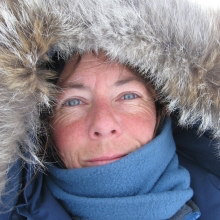
Kate is a bioacoustician and oceanographer who uses passive acoustic monitoring to study underwater soundscapes around the globe. Her recent work has focused on listening to climate change in the Arctic by detecting changes in the biodiversity of the region using acoustics. She has worked with artists and musicians to share some of the sounds she has recorded with people around the world.
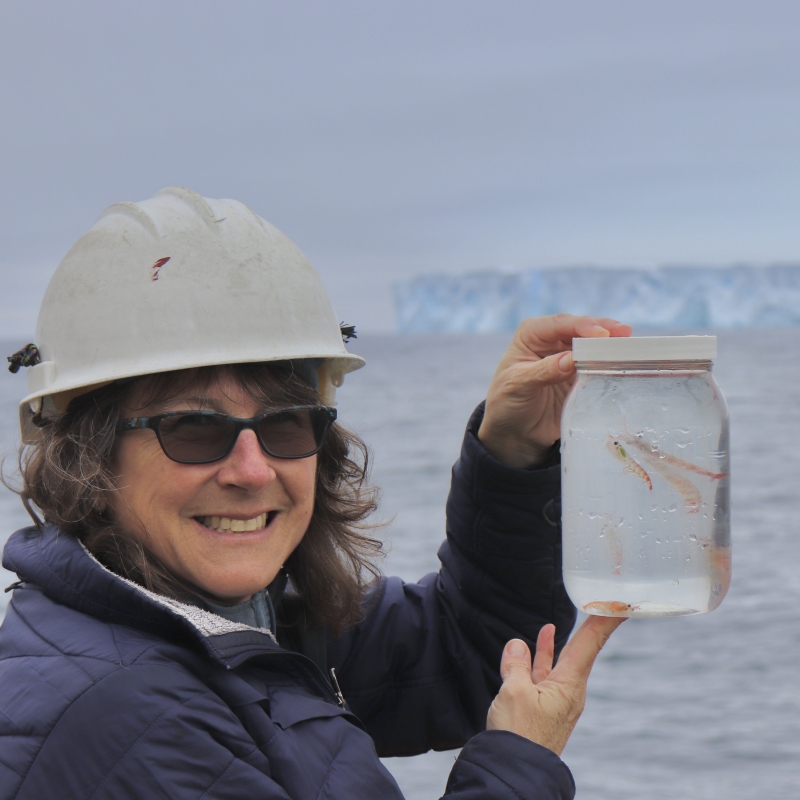
Debbie Steinberg is a biological oceanographer and zooplankton ecologist. Her research program focuses on how zooplankton influence cycling of nutrients and organic matter, and how climate affects long-term change in zooplankton communities in different marine environments. In Antarctica, she is co-lead of the Palmer Long-Term Ecological Research program investigating the long-term effects of climate change on the pelagic food web west of the Antarctic Peninsula.
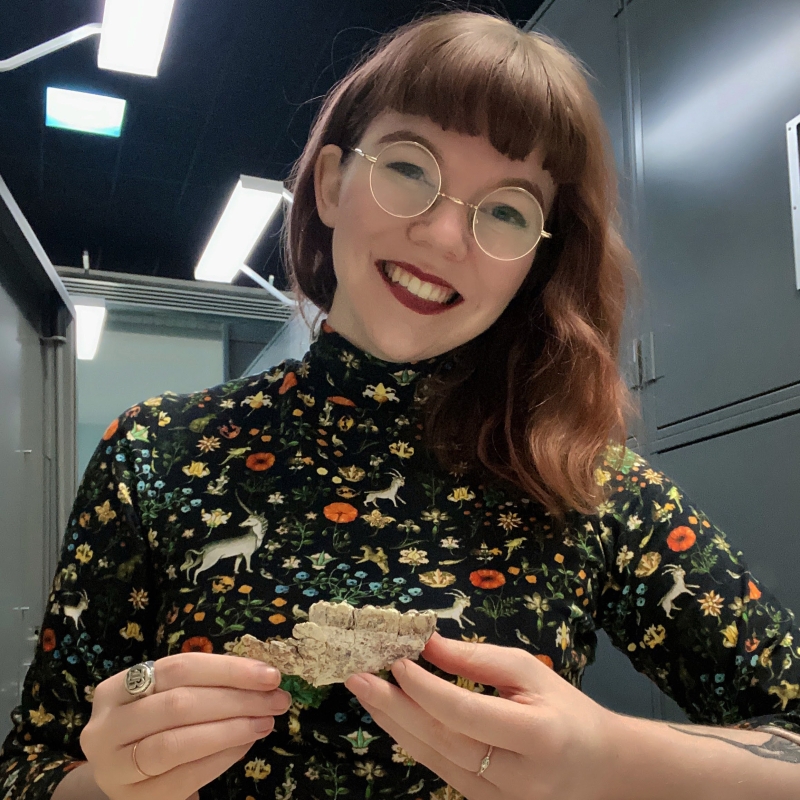

Precious Symonette is an educator, researcher, writer, public speaker, and international facilitator. She teaches Creative Writing at Miami Norland Senior High School and is an Adjunct Professor with Miami Dade College. She is the founder and CEO of the Florida Freedom Writers Foundation, a nonprofit dedicated to helping teens to promote free expression both in written and verbal form. She is passionate about teaching Creative Writing and helping her students to learn about themselves, to share their stories, and to develop into global citizens. Precious enjoys traveling the world, learning about different cultures, hiking, participating in service-learning projects, and spending time with her family.
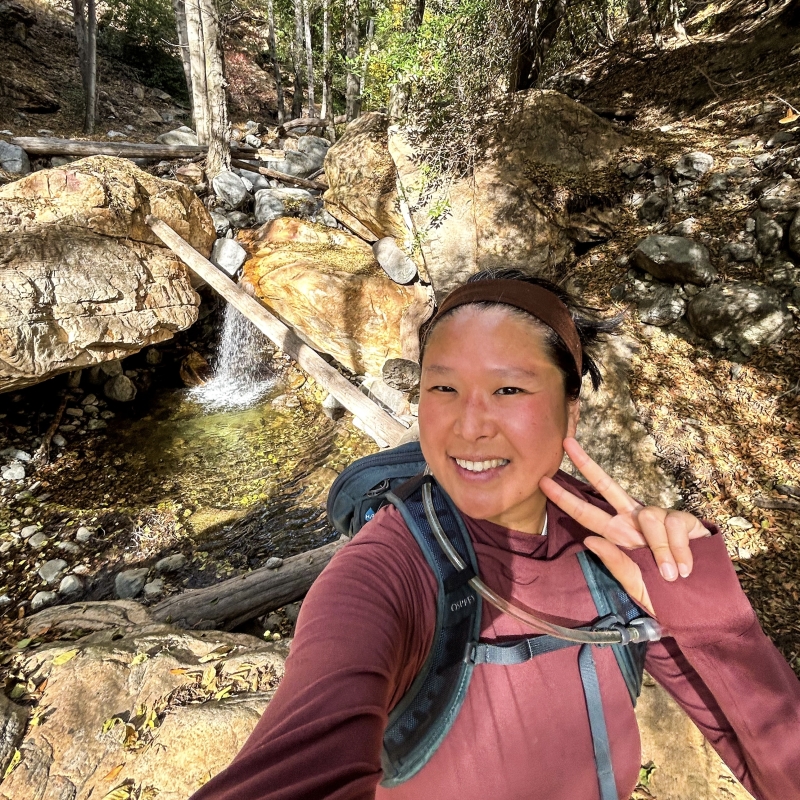
Gail Tang is a Professor of Mathematics with a deep commitment to exploring the intersections of mathematics with the arts and sciences. Her work aims to cultivate a richer understanding of mathematics through its current and historical applications, fostering a dynamic, interdisciplinary approach in the classroom. Her research centers on nurturing students’ mathematical creativity and advancing faculty development to promote humanistic teaching and research experiences. Outside of academia, Gail takes comfort in growing and preserving her own food, familiarizing herself with the land through hikes, and delving into the cultural connections embedded in global food history.
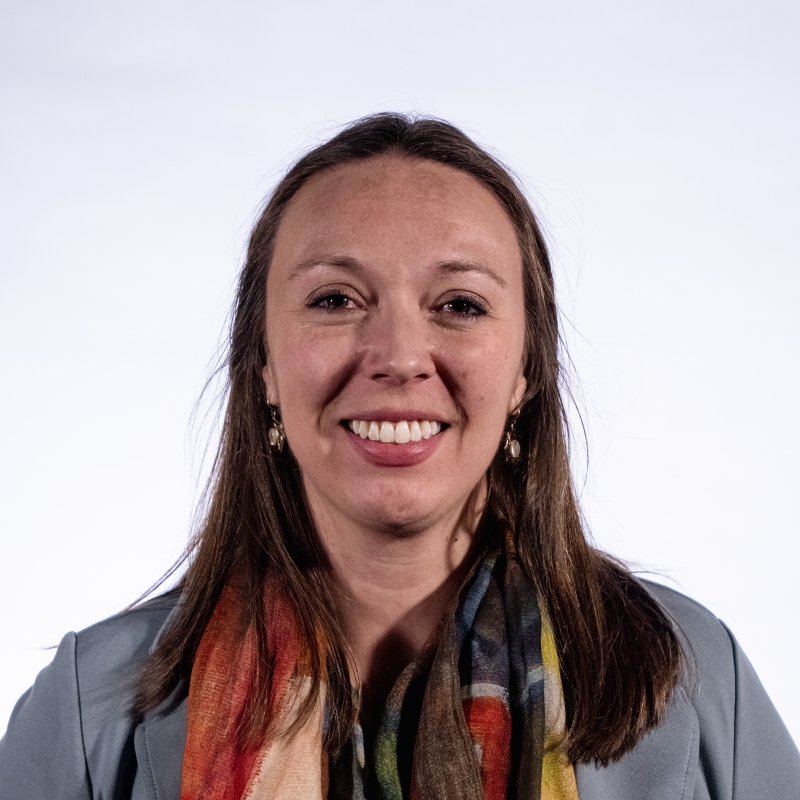
Tricia is a plankton ecologist and biological oceanographer focused on the effects of rapid climate change on phytoplankton and zooplankton populations and physiology. The major pillars of her research explore how global climate change (1) has and will impact long-term trends in plankton population dynamics and (2) has affected plankton physiology and feeding ecology. She studies these themes around the world from Antarctica to the Gulf of Maine. Tricia was also recently the President of the non-profit organization, Society for Women in Marine Science (SWMS), whose mission is to bring together marine scientists of all career levels to discuss the diverse experiences of women in marine science, celebrate the research done by women in the field, and promote the visibility of women in the marine science community.
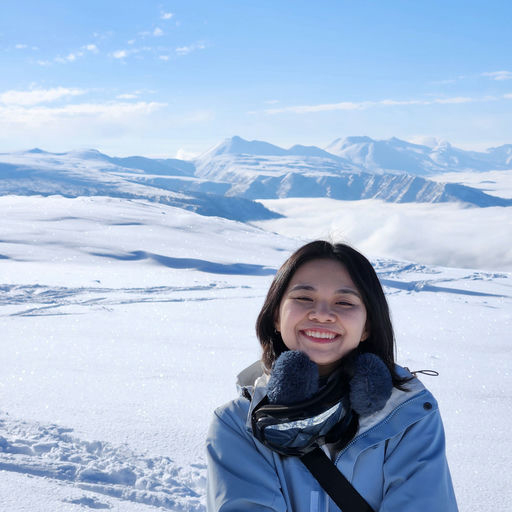
Kiera is a PhD student who studies ice–ocean interactions and basal melting processes in Antarctica. Her project focuses on using airborne radar sounding to characterize subglacial channels beneath Antarctic ice shelves and assess their role in freshwater transport to the Southern Ocean. This work combines geophysical data analysis with numerical modeling to better understand ice sheet stability and future sea level rise. Outside of science, she enjoys traveling, exploring new cultures, and learning new aspects of life.
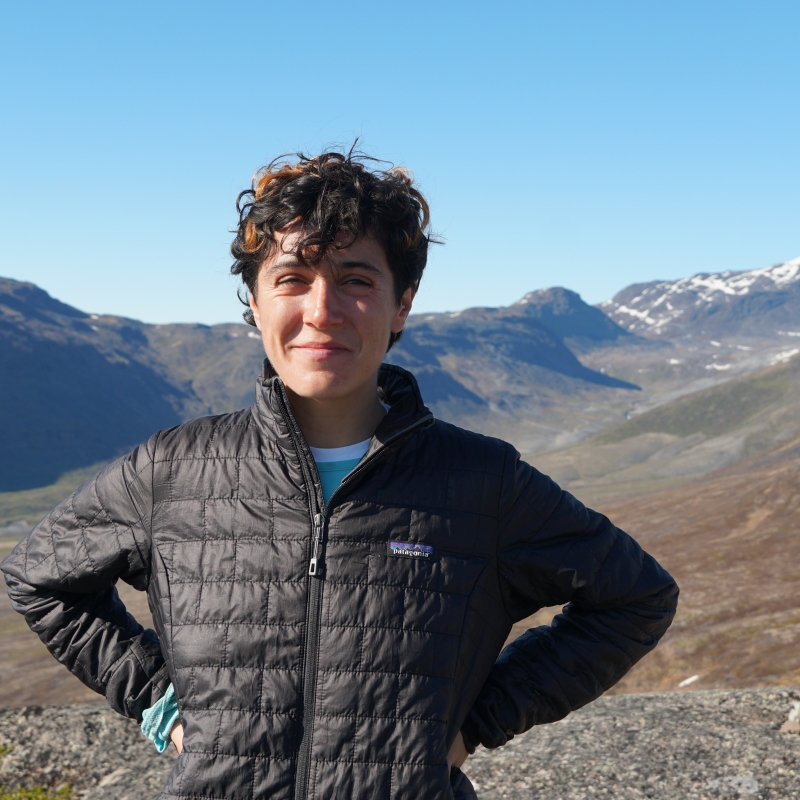
Mia’s research focuses on how climate and landscape changes impact ecosystems in Arctic lakes. Her project extracts chemical compounds from lake sediment archives in Kalaallit Nunaat (Greenland) to measure shifts in freshwater primary producers over the last 10,000 years. Mia’s work illuminates how climate change drives shifts in lake cyanobacteria that could pose threats to drinking water in the Arctic. She most enjoys how her research has opened doors for community conversations, research partnerships, and new friendships in Greenlandic communities.
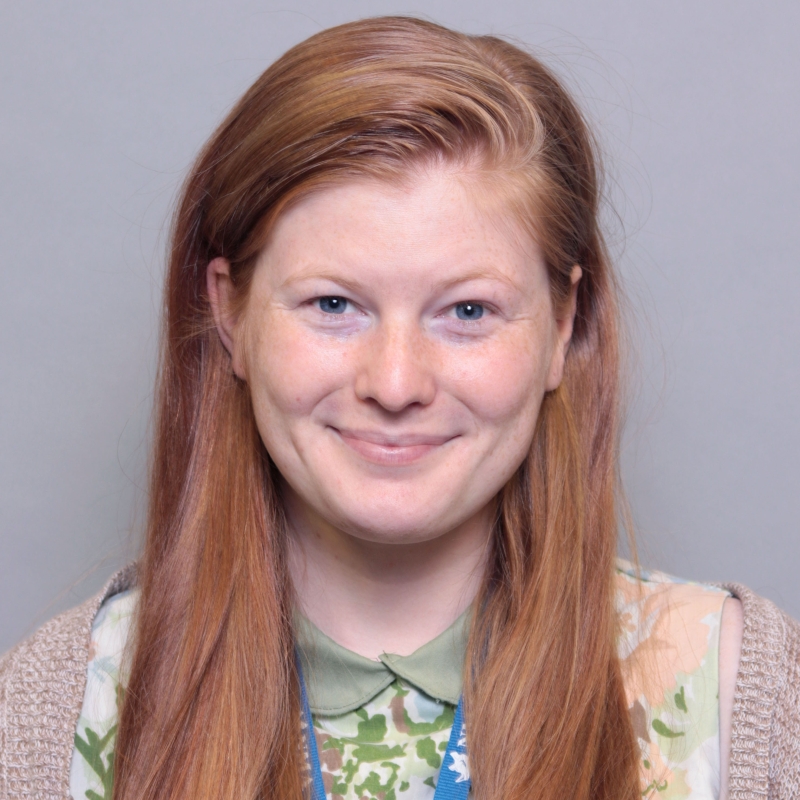
Andi Twiss is a dedicated Earth and Space science teacher passionate about connecting young scientists to the world around them. Eager to provide interdisciplinary, hands-on, project-based learning, she prides herself on bringing cultural connections into the classroom and fostering a global mindset in her scholars. From the school garden to the Amazon rainforest, empowering scholars to be engaged and curious investigators is the foundation of her teaching.
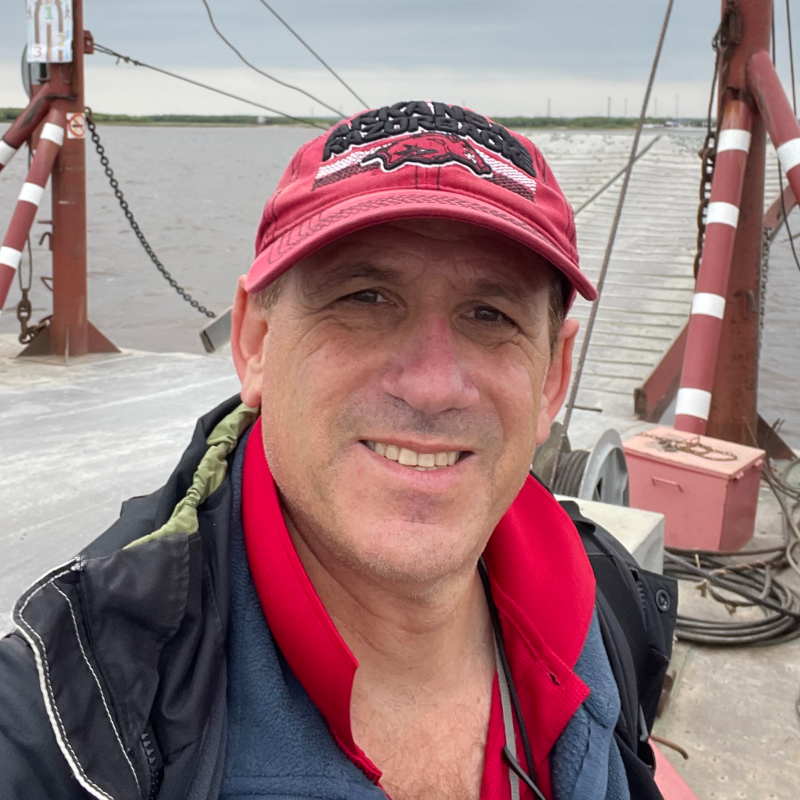
Peter Ungar is an evolutionary biologist, ecologist, and director of the UA Environmental Dynamics Program. His research focuses on the impacts of climate change on ecosystems over deep time and today. This work touches on a variety of fields, from human evolution to Arctic ecology.

Abbey is a field ecologist with the National Ecological Observatory Network (NEON) in Domain 18/19 (Tundra/Taiga). Her role is training and leading crews of early-career biological field technicians to collect high quality ecological data focused on NEON’s flora field sampling protocols. Outside of work, Abbey spends most of her time training and racing her team of distance sled dogs.

Katrina Walker has taught middle school science for twenty-one years. Her accolades include earning the Outstanding Educator of the Year award twice, publishing an article in ScienceScope, participating in the EARTH (Education and Research: Testing Hypotheses) Workshop through MBARI (Monterey Bay Aquarium Research Institute), and recently collaborating with scientists from Antarctica through the Polar Literacy program. Her passion includes making science come alive for her students by utilizing real science data in the classroom. Katrina enjoys traveling the world, practicing yoga, and spending time with her two teenage children and two corgis.
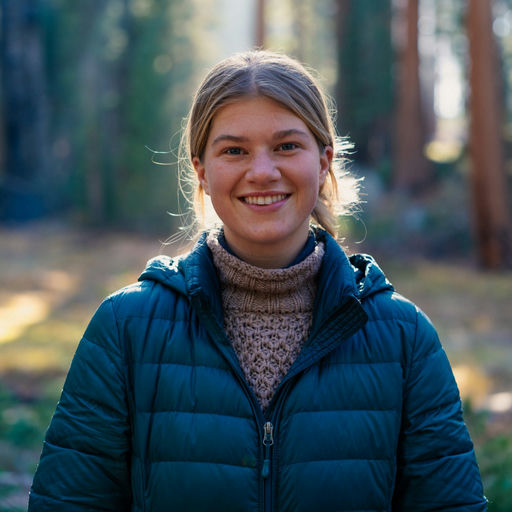
Julia is interested in how a warming Arctic is affecting the carbon cycle, with a focus on methane dynamics from permafrost thaw. Specifically, she studies upland tundra to understand how these landscapes act as methane sources or sinks. Her research investigates both the spatial and temporal variability of methane fluxes and the role of old permafrost carbon in contributing to methane emissions.
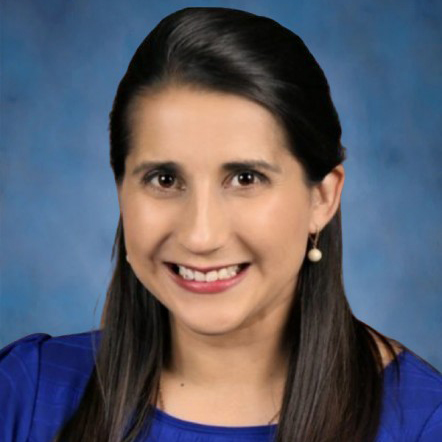
Amanda is a 6th-grade integrated science and ancient history teacher. She believes in the power of educators being able to transform the walls of their classrooms into fun and interactive learning environments for all of their students. Her students are often exploring the fundamentals of science through hands-on STEAM labs and diving into ancient history through the art of storytelling and investigations. She is looking forward to being able to bring Polar STEAM education, real-life science connections, and critical Earth’s System concepts to her students in sunny Florida. She values collaboration in education and hopes to be able to facilitate getting educational resources and curriculum to other educators around the country.
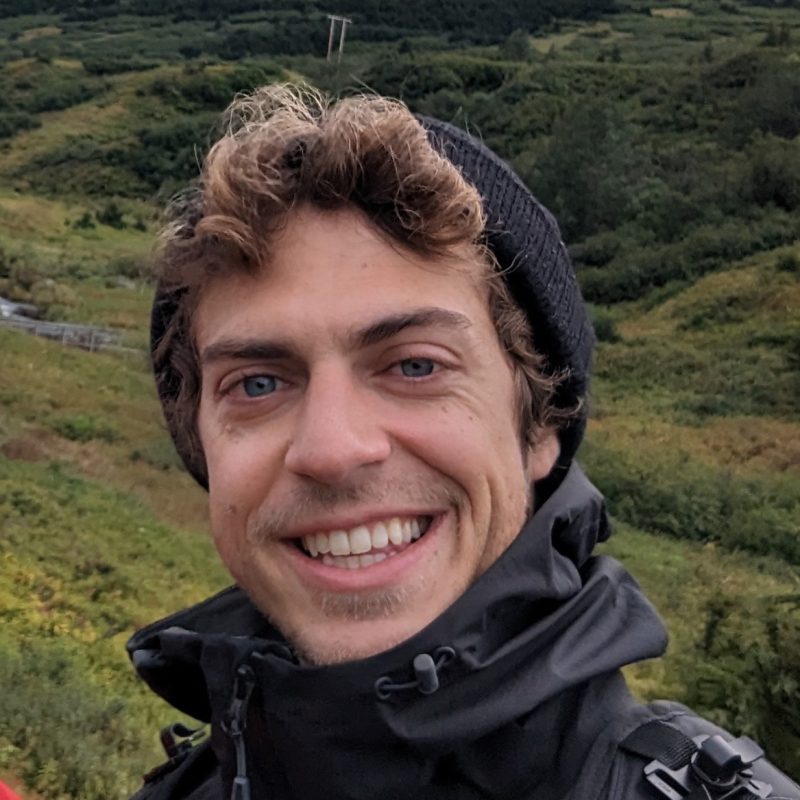
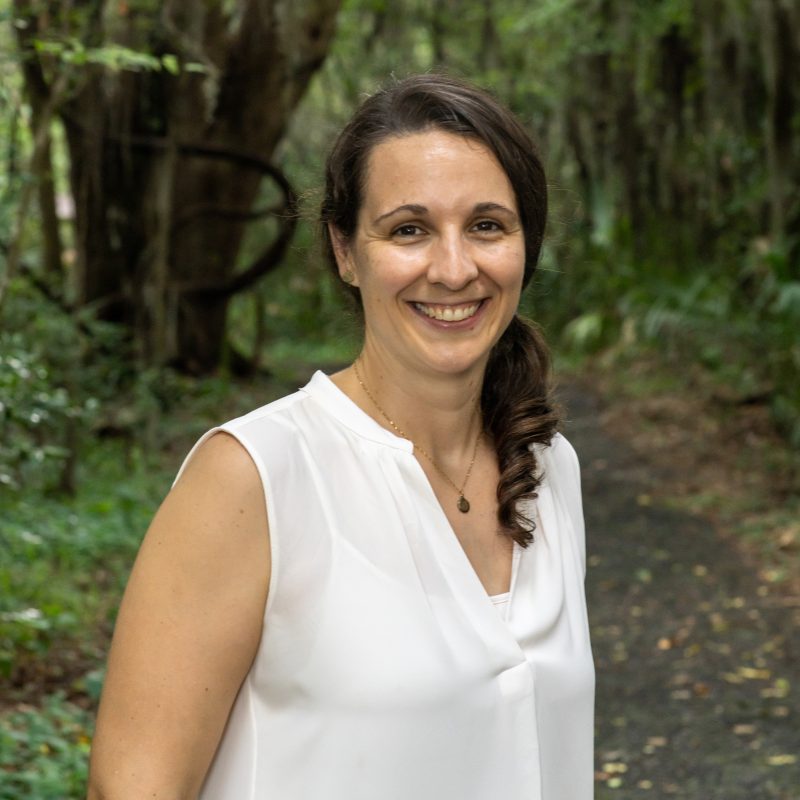
Elizabeth uses satellite images to study how climate change is impacting the Arctic landscape. She is particularly interested in feedbacks between climate change and the land surface, for example how more frequent and intense fires could release more carbon to the atmosphere or how climate-driven changes in tree cover could affect albedo. She is currently working on a project investigating long-term trends in Arctic lake area.
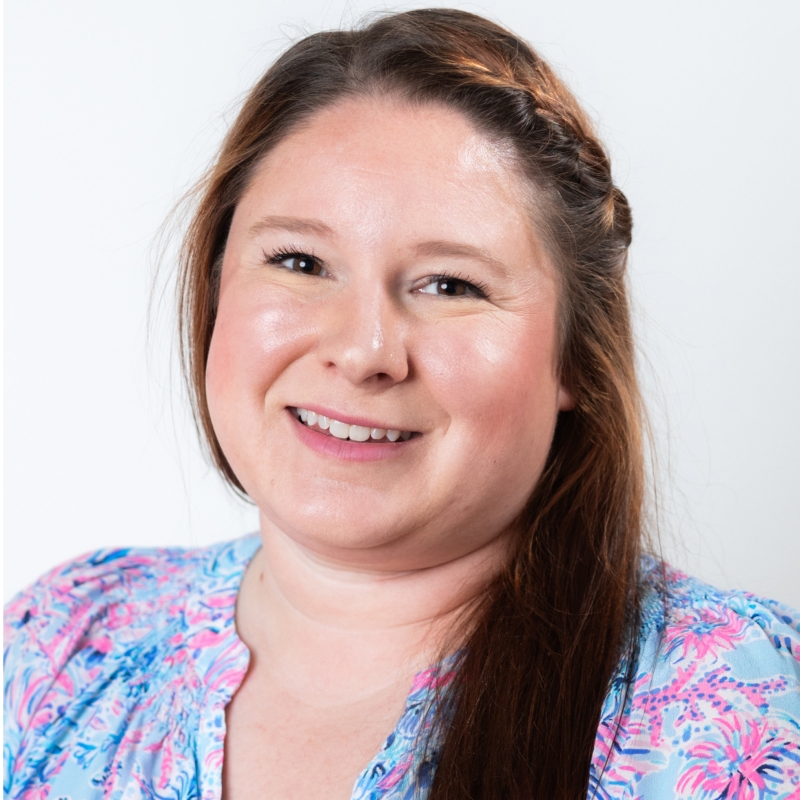
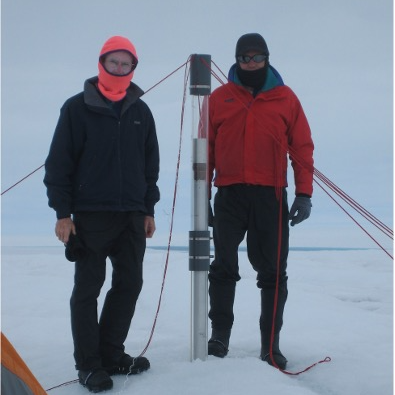
Dale is a physicist and geophysicist interested in the physics of electromagnetic radiation (from radio waves to X-rays) and ways to apply that physics to exploration of icy places in the solar system. He has also been leading development of an ice melt probe to further exploration of lakes beneath 1-4 km of ice in Greenland and Antarctica. These lakes are terrestrial analogs to ocean worlds in our solar system, in which he is interested from an astrobiological standpoint.
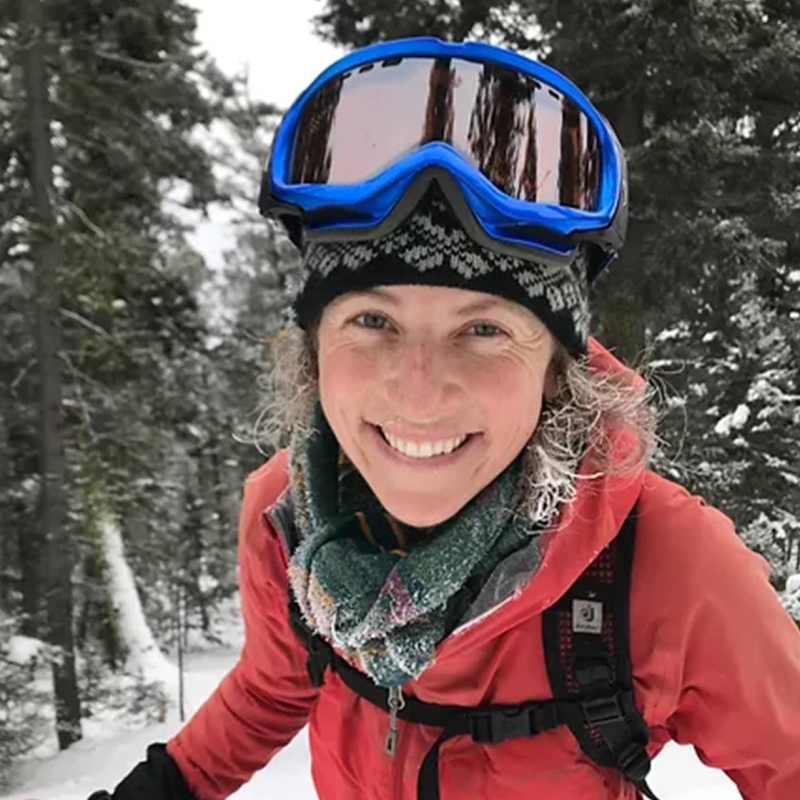
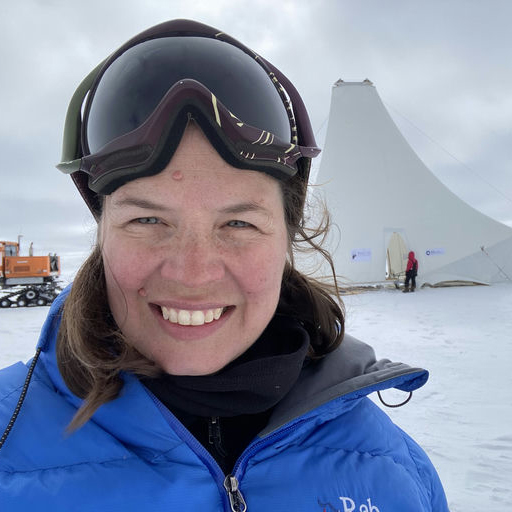
Stephanie Wissel is an experimental astroparticle physicist who searches for subatomic particles known as neutrinos when they interact with ice. She is interested in using neutrinos to explore extreme astrophysical environments. She has been working on experiments in both Greenland and Antarctica since 2012.
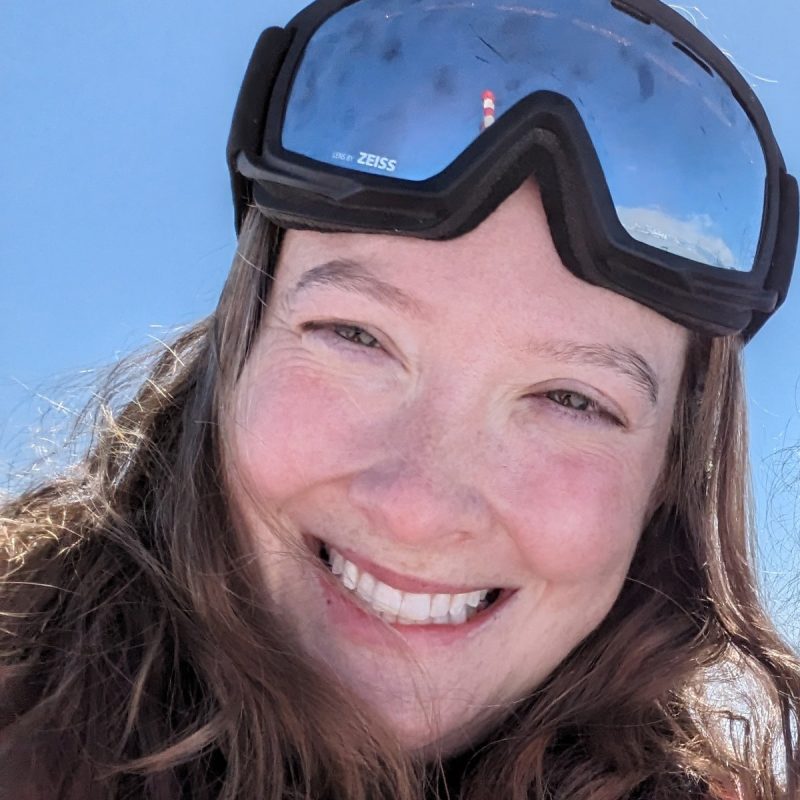
Julia is a postdoctoral fellow studying the adaptation of polar organisms to climate change by investigating the mechanisms of temperature detection in polar fishes. Her work combines evolutionary analyses, experimental physiology, field collections, and functional characterization of candidate genes using electrophysiology to understand how both Antarctic and Arctic fishes sense temperature.
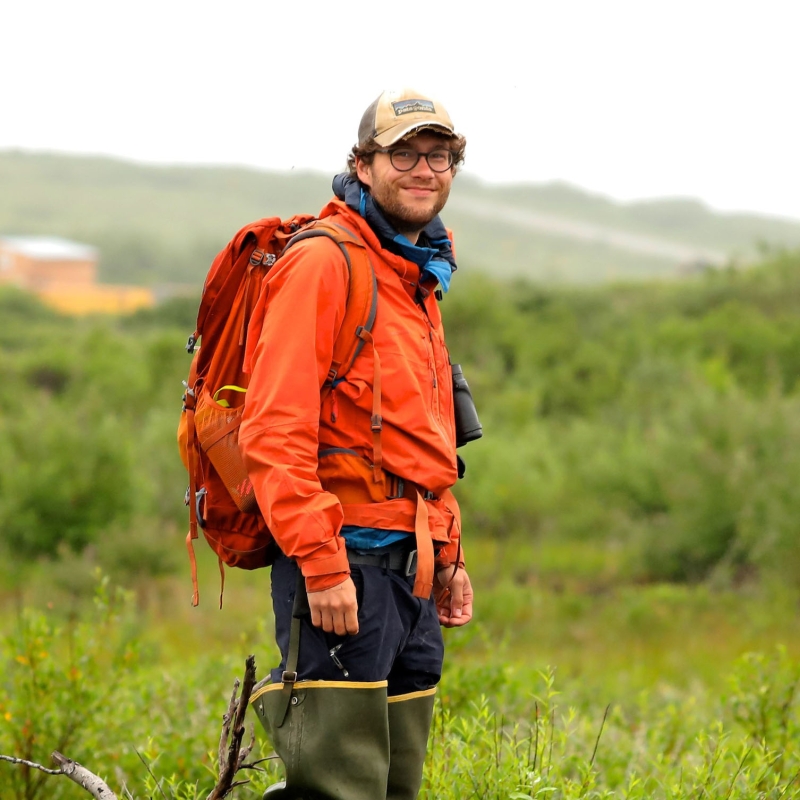
Sebastian is an ecologist focused on arctic community ecology. He is currently working on his PhD, studying the biodiversity impacts of beaver ponds – which are rapidly expanding in number across the Arctic – in arctic areas underlain by permafrost. Sebastian harbors a love and enthusiasm about the tundra and the mountains, and is passionate about sharing knowledge of the unique, beautiful arctic ecosystem.

Dr. Liang Zeng is a Professor in the Department of Physics and Astronomy. She specializes in physics education and physics teacher education. She is passionate about improving physics education in her community by working to expose preservice teachers to experiential and phenomenon-based teaching techniques.

